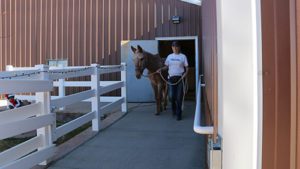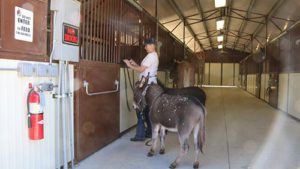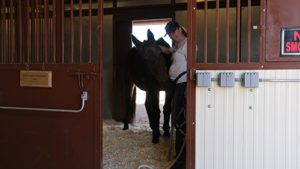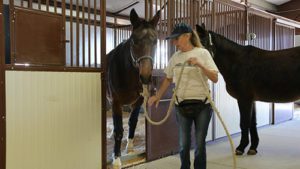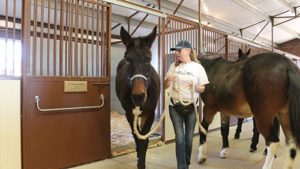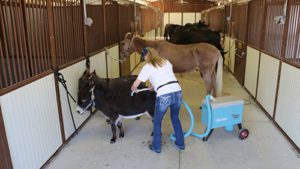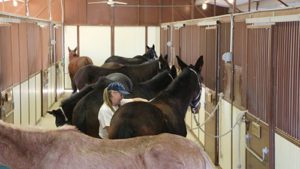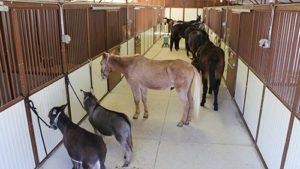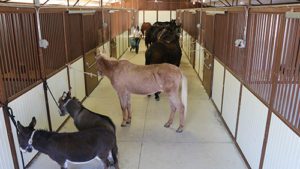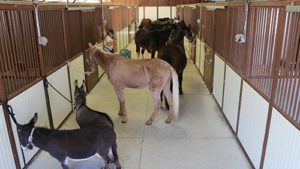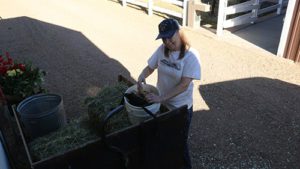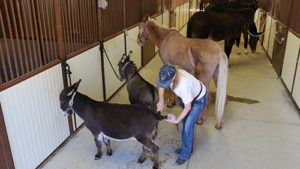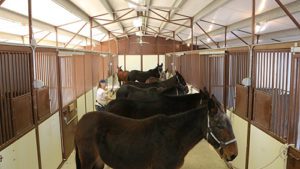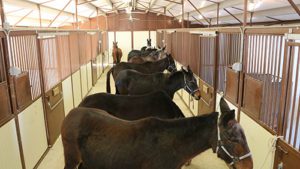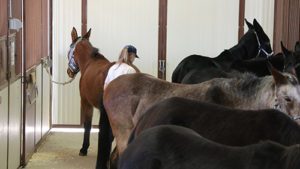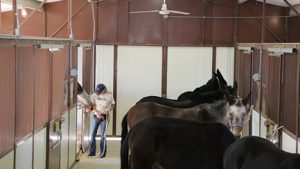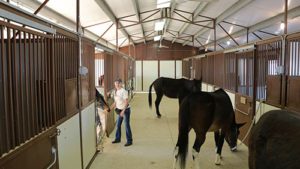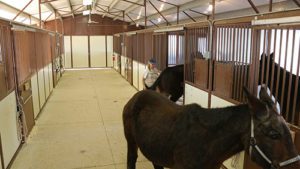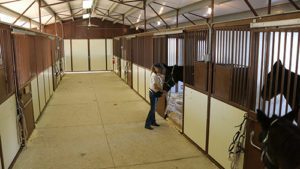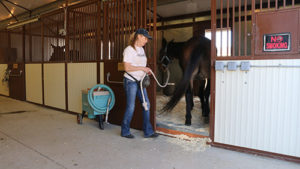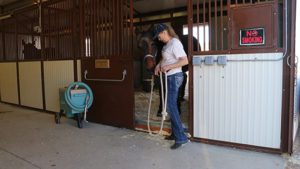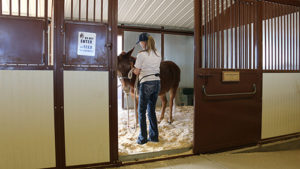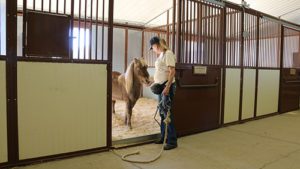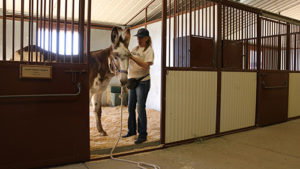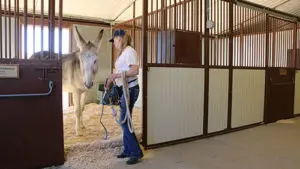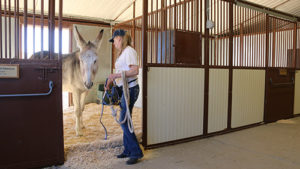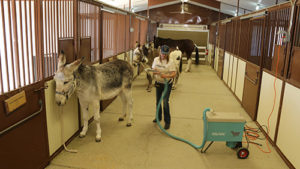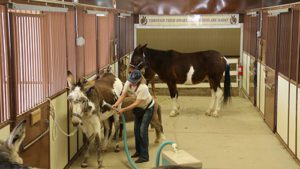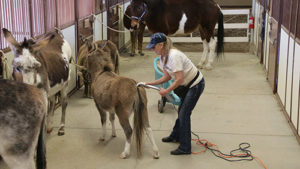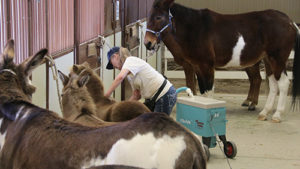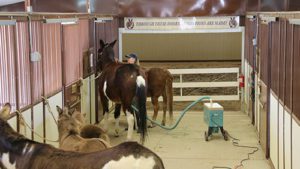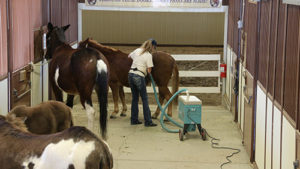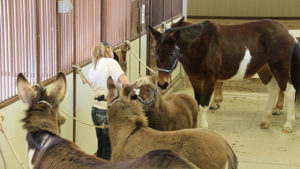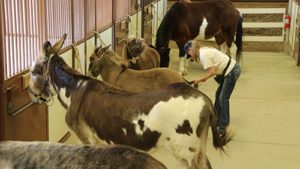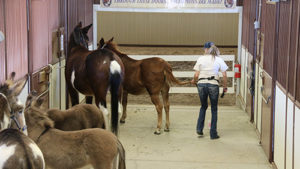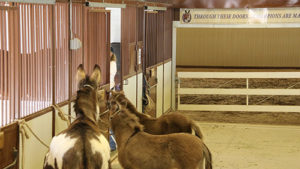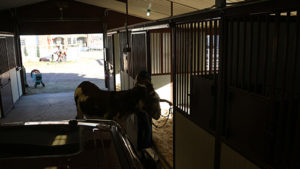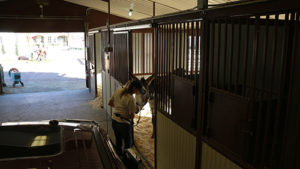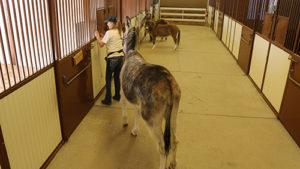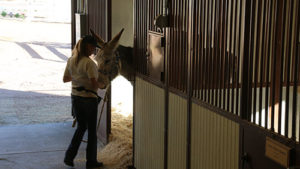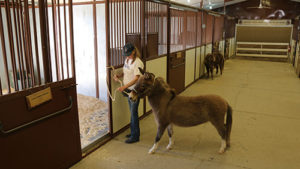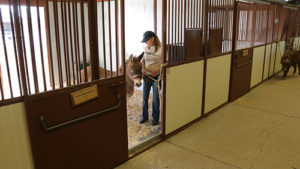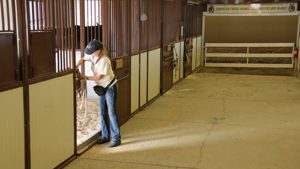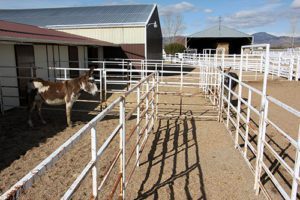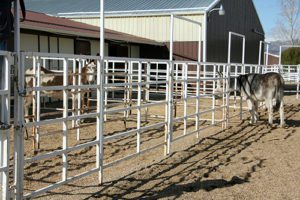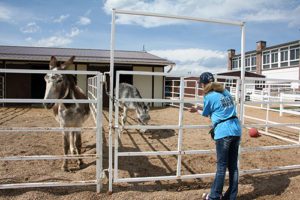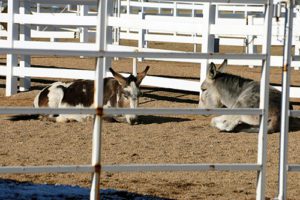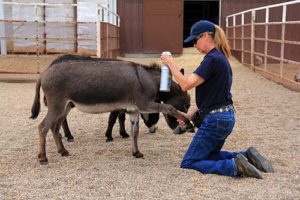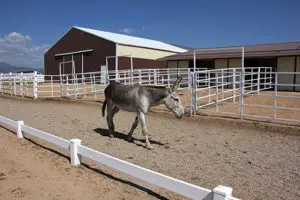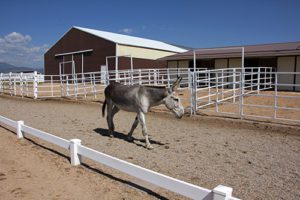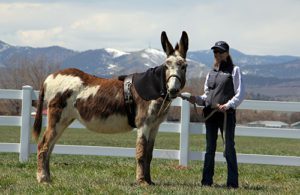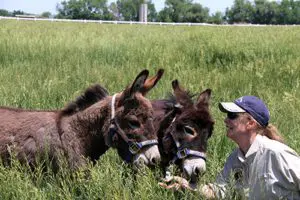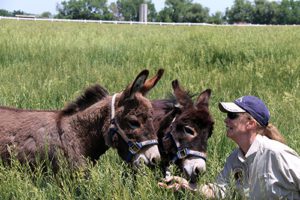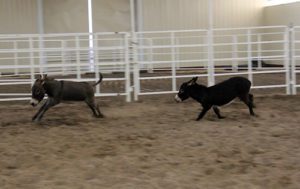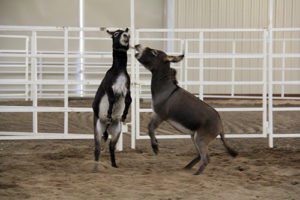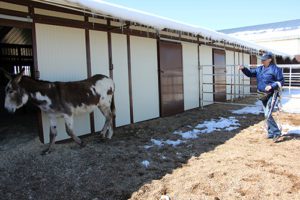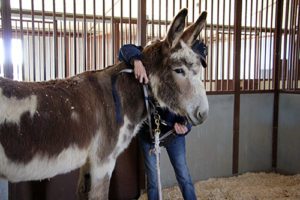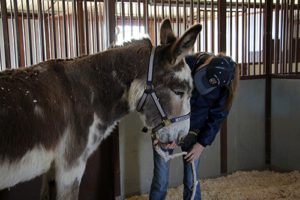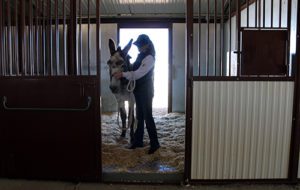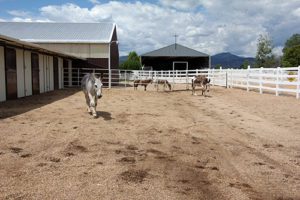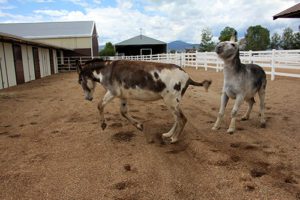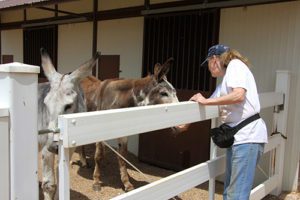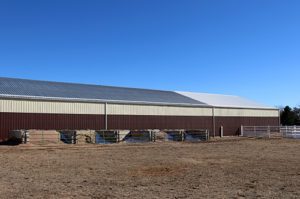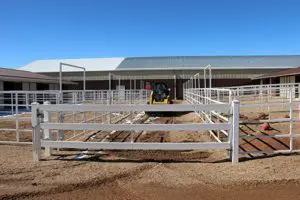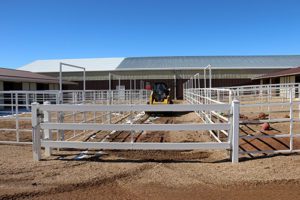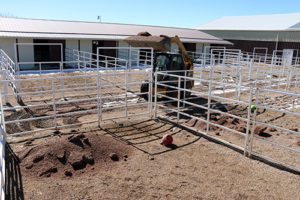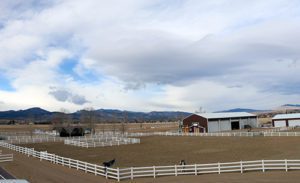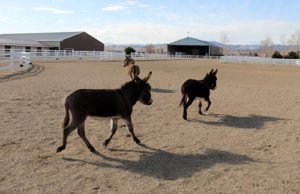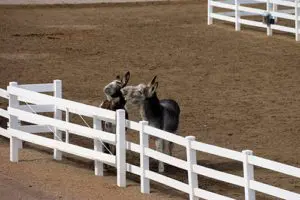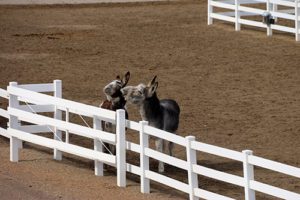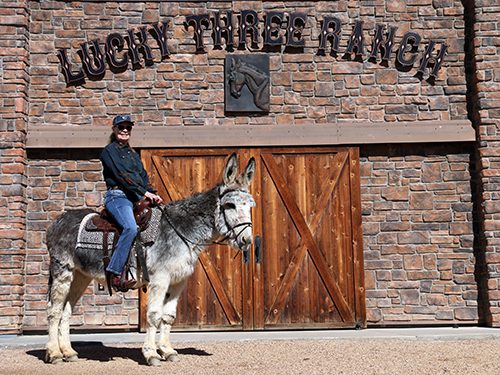
lucky three ranch


LTR Training Tip #61: Laterally Ground Driving the Hourglass
Lateral ground driving should be done slowly and taken in a natural sequence. Learn how to progress from lateral driving along the rail to laterally ground driving in the Hourglass Pattern.
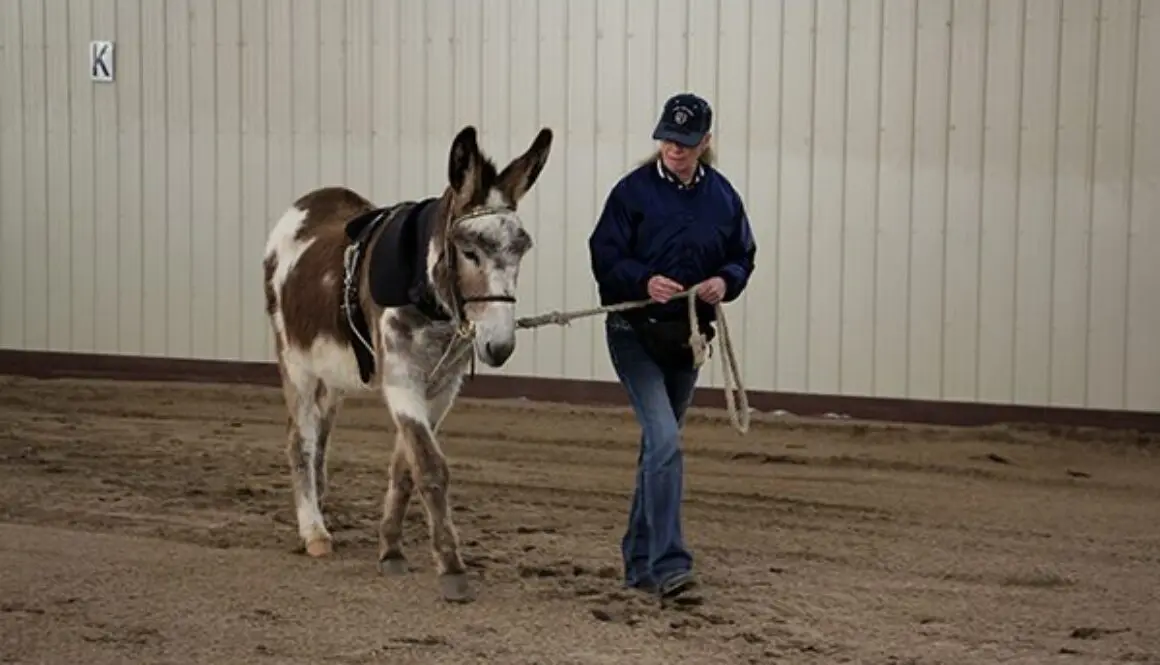
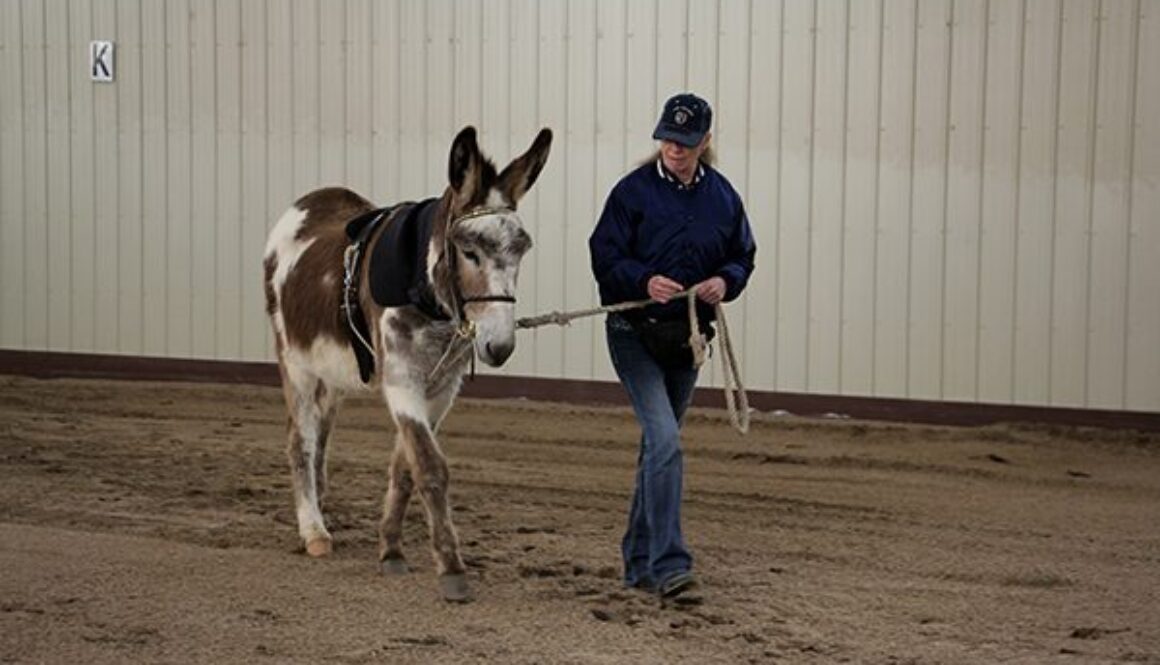
CHASITY’S CHALLENGES: The Hourglass Pattern for Good Posture: 4-14-20
4-14-20
The “Hourglass Pattern” is an amazing therapeutic approach to conditioning that I have used with all of my equines of varying ages, sizes and breeds. It builds a foundation of symmetrical strengthening at the core involving the ligaments, tendons muscles and soft tissue that support the skeletal frame and promotes even wear of the cartilage between bones in the joints. It can prevent arthritis as the animals age. This is vital to your equine athlete’s health. Chasity and I open the gate to her rebalancing and rehabilitation exercises in the “Hourglass Pattern.”
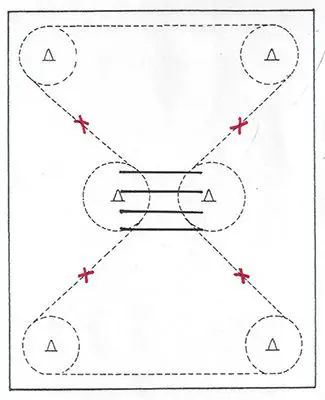

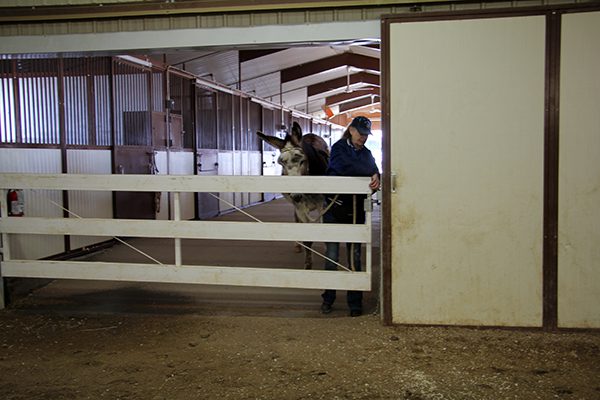
The red “X’s” in the pattern represent the points where you are to halt, square up, reward and wait. This process becomes helpful as your equine learns to navigate gates properly and learns to wait patiently through repetition and consistency in your behavior. Always go through gates exactly the same way so your equine knows what to expect. Abrupt actions lead to chaos.

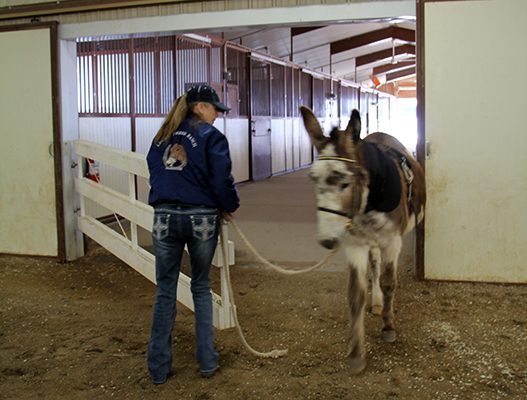

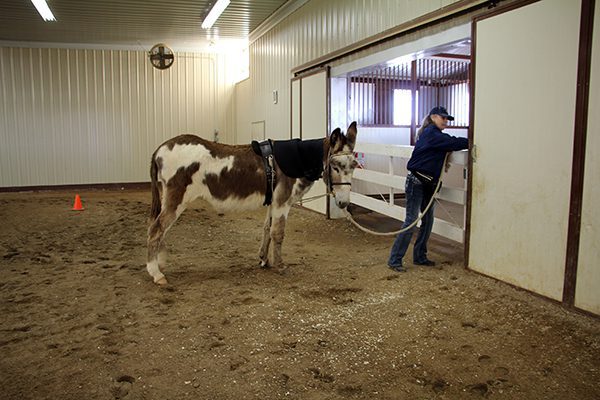
We want to promote self-carriage, so we do not hold the lead rope in the right hand when leading from the left side where it can subtlety cause movement in the head and neck from side to side, adversely affecting their balance. Rather, we hold the lead rope in the left hand when leading from the left side and in the right hand when leading from the right side. We lead from the inside of the arcs in direction through the pattern. Always, say the animal’s name, give the command to “Walk On,” look where you are going, point in the direction of travel with your other hand and walk in sync with the equine’s front legs. This facilitates good posture for both of you!

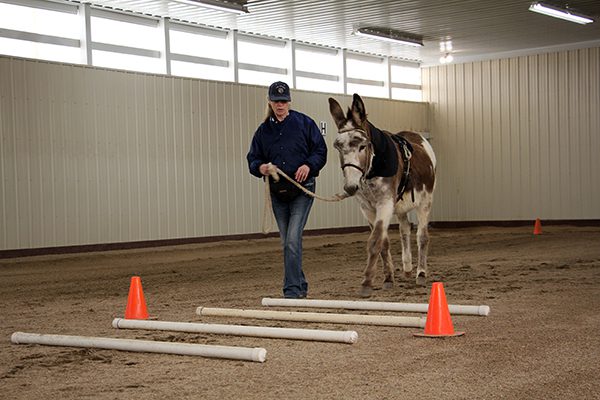

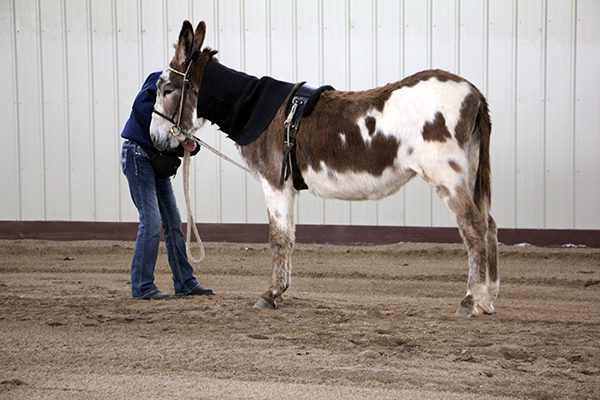
When negotiating the “Hourglass Pattern,” there is an internal pendulum that swings back and forth and comes to center each time the animal halts and is squared up. If you were to work only along straight lines there is an optical illusion that takes place along the perimeter and makes the animal’s body lean to the inside of the track, and when halted, they cannot find the center of balance. Every time you halt, square up your equine and reward with the crimped oats that you keep in your fanny pack around your waist (other “treats” will not work the same way!). Then wait until they finish chewing so they can settle into their perfect balance unobstructed.
As they progess, they learn to bend to the arc of the turns through their rib cage, carry their body erect in good posture supported by stronger ab muscles that round the back upward as they learn to give to the “Elbow Pull” such that it remains loose. When it is tight, they are simply having difficulty holding their good posture and lean on the “Elbow Pull” much like a beginning ballet dancer must use the bar on the wall. Many people think that you do your equine a favor by not putting a bit in their mouth, but you cannot affect their posture without one. The animals that are not bitted and schooled in good posture can have all kinds of postural issues as they age. Chasity is falling in and out of good posture because she is only in Week Three of her training. As she improves, she will be able to keep the “Elbow Pull” loose for longer periods of time until it is always loose.

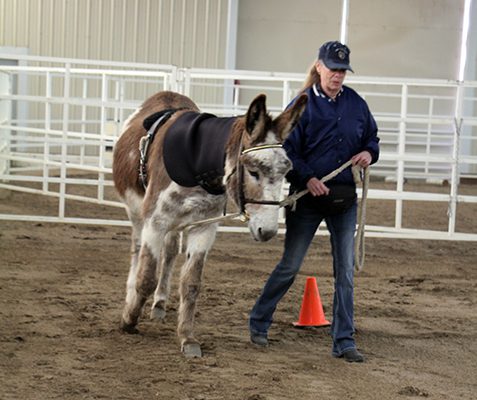

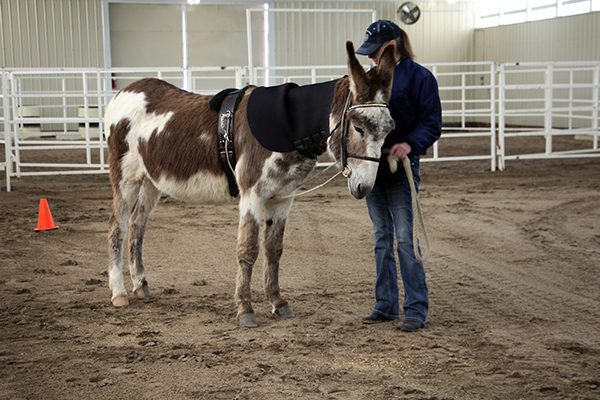
As this way of moving and standing becomes more habitual, so does their comfort in these positions. When they rest, they will stand 4-square instead of with splayed legs, or a hip dropped and a foot cocked. They are happy and deliberate in their movements and good posture continues to improve until this become their new habitual way of moving and resting. You will see marked changes in their play and rest patterns while in turnout.

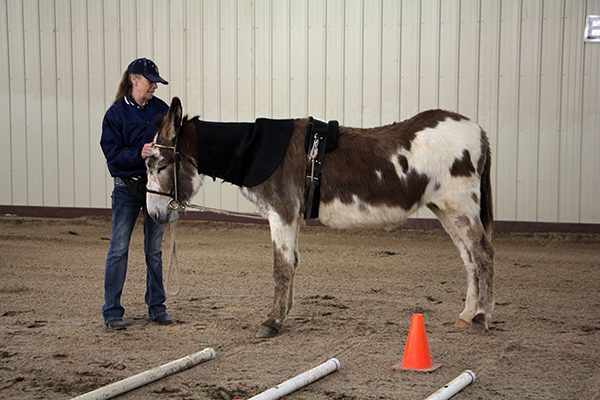

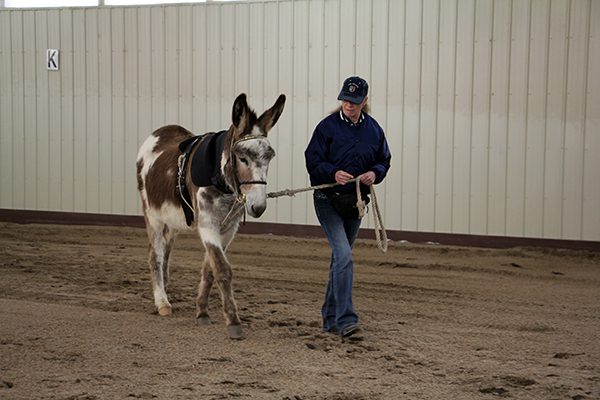
Adding rails to the center of the pattern keeps them attentive, alert and teaches exact hoof placement (hoof-eye coordination). As their movement becomes more deliberate and balanced, their confidence is increased as is their trust in you for making them feel so comfortable in their own skin. They learn to wait for your command before moving. They look forward to their time with you and will gladly leave the herd to be with you! No more herdbound behaviors!

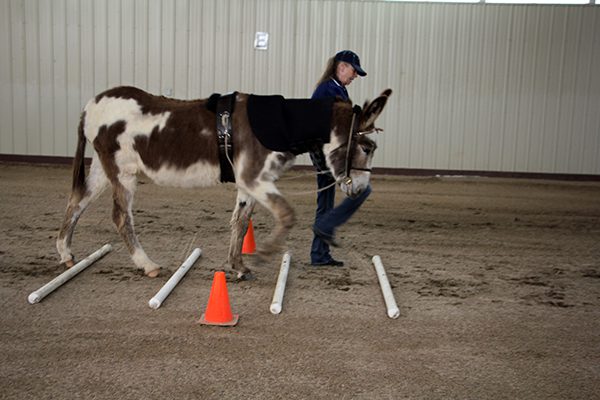

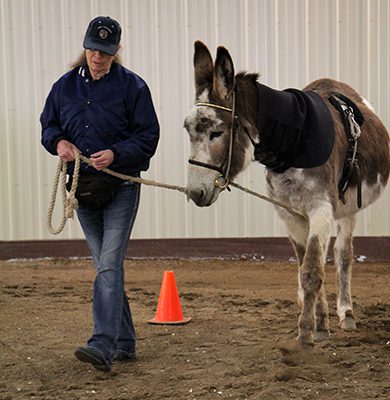
We build this foundation through the “Hourglass Pattern” first during leading training, then after obstacles and lunging training during Ground Driving, and finally Under Saddle. Each stage produces new challenges to the equine’s body and mind that add to their overall development in a logical, sequential and healthy way. Because of all these small steps, with gradual difficulty, it is easy and fun for both you and your equine to do. You are never over-faced with difficulty and you learn to appreciate the little victories along the way! Chasity was somewhat of a pushy, bully to start with, but she now waits patiently when I ask and navigates movement in much better posture, even after only three short weeks! More dramatic changes to Chasity’s body and mind are still to come! It’s not just about the end result. It’s all about the journey!

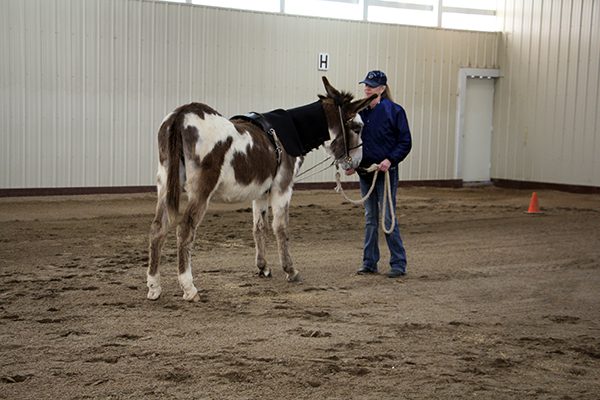

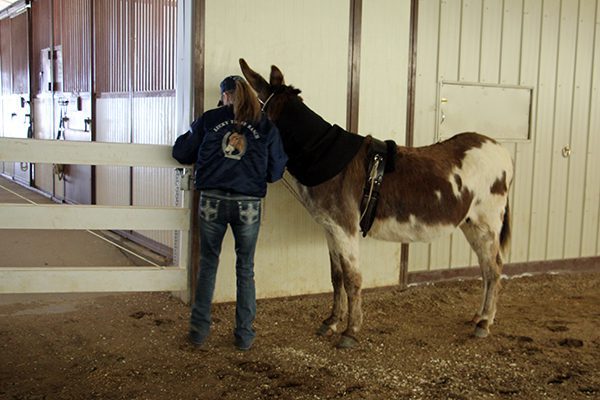

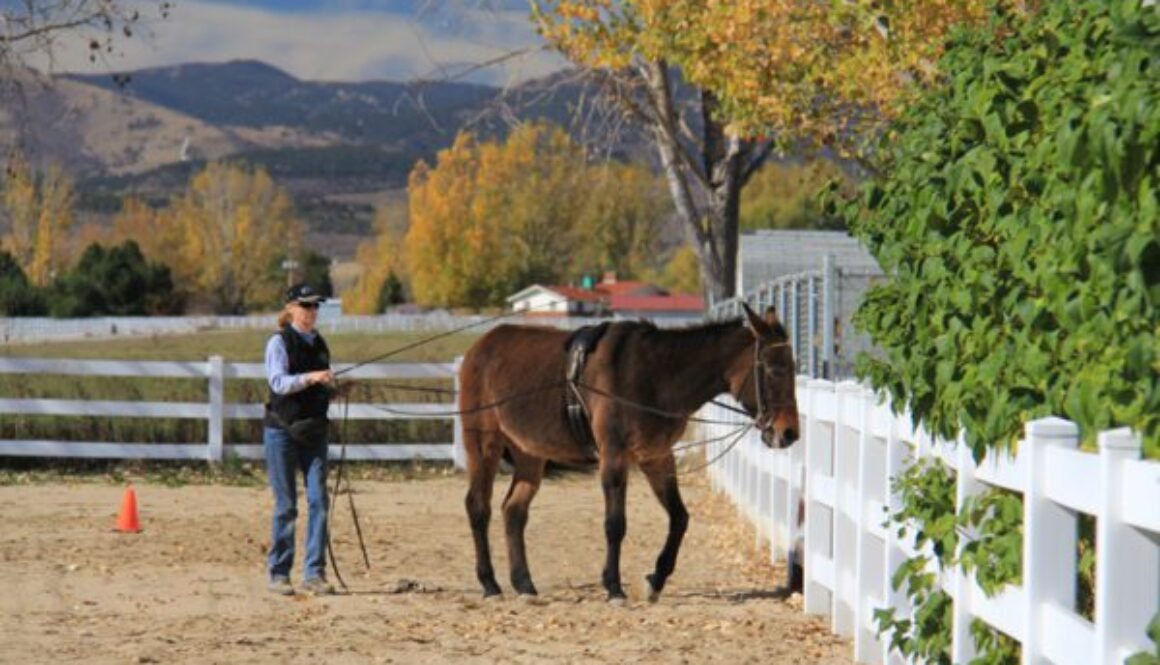

LTR Training Tip #60: Ground Driving the Hourglass Pattern
Ground driving the hourglass keeps you and your equine organized and in good posture. Watch Meredith show you how to get into sync with your equines using this pattern.
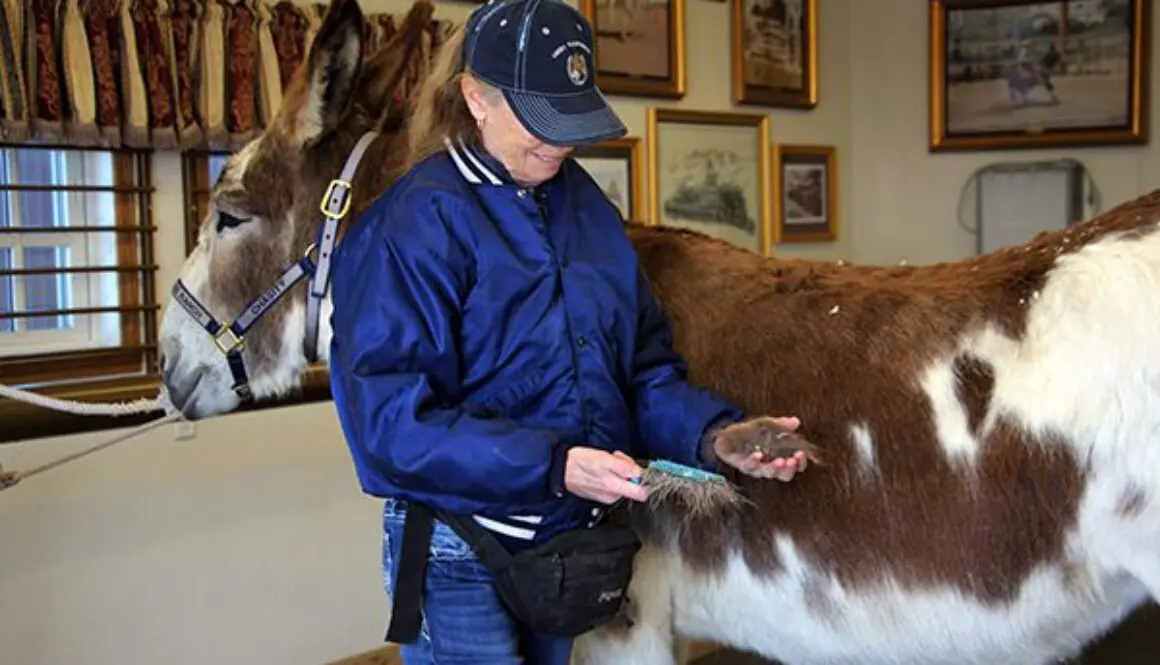
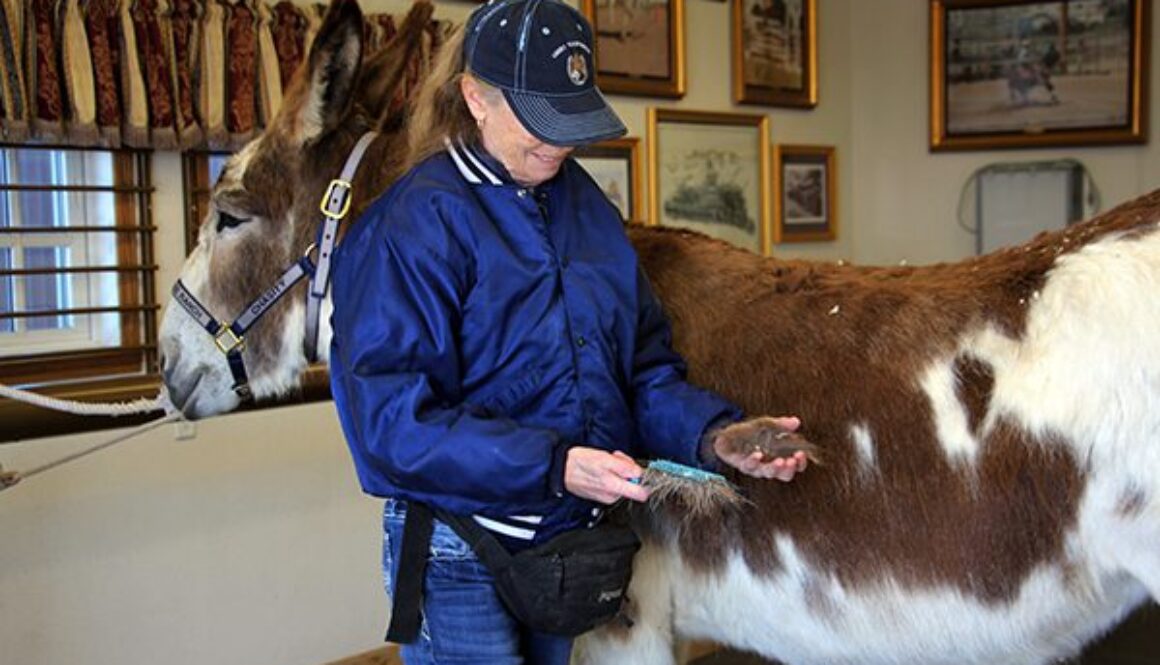
Chasity’s Challenges: Grooming Routine: 4-14-20
4-14-20
Grooming is an important activity in your equine’s life and it need not be a struggle if it is done regularly. Chasity was not real sure of us, or what to expect when she first arrived, but she is gaining confidence and calmness with each grooming session that precedes her workouts. Right off, she is rewarded for going to her designated work station. This familiarity sets the stage for the tasks to come.
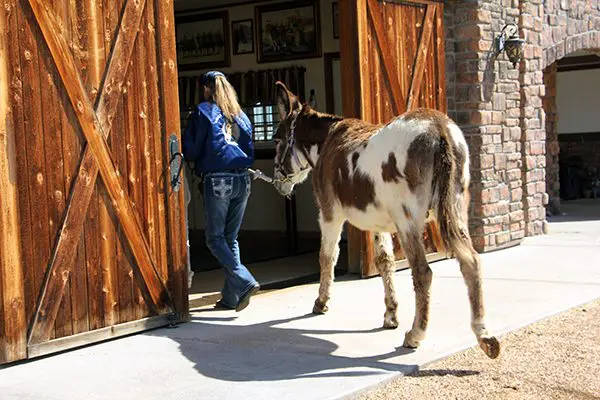
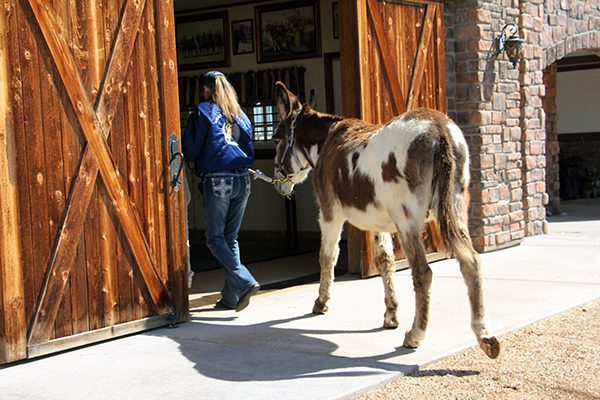
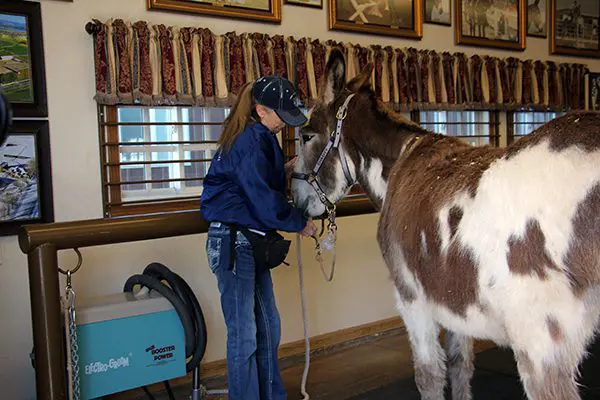
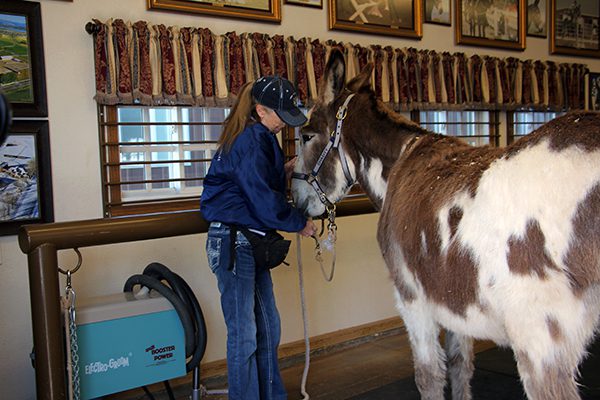
I begin with a wet towel to clean her eyes, then her nose and finally her ears. When cleaning the ears, I stroke upwards with the hair and try not to go against the way it grows. Most Longears enjoy having their ears rubbed anyway, but HOW you do it can make a huge difference in their willingness to comply.
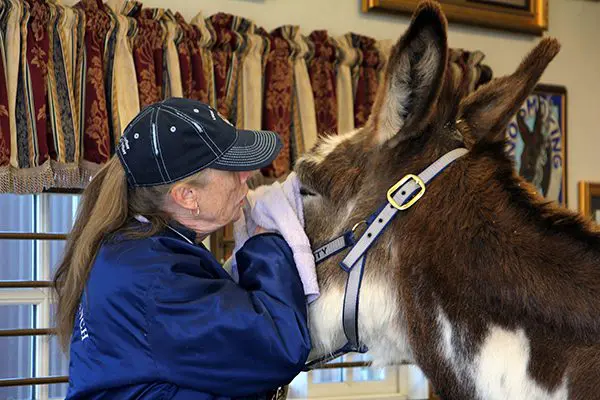
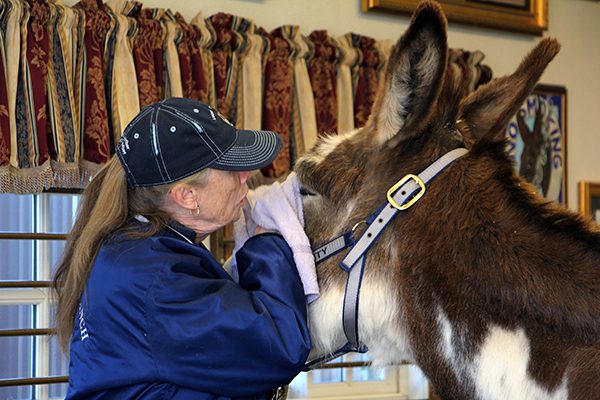
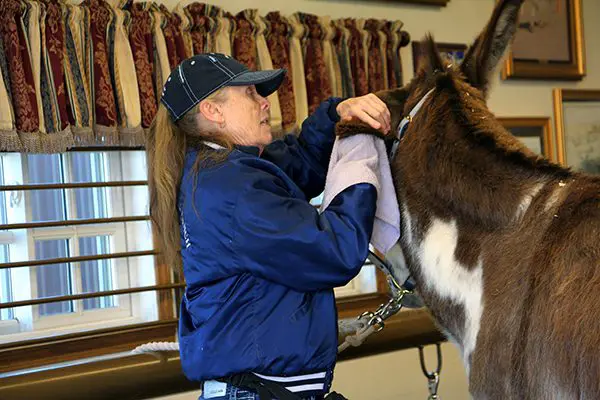
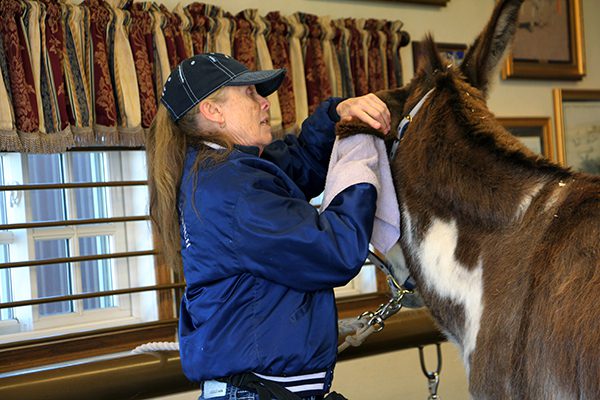
Then I begin on her forehead and along her neck with a human, multi-bristled plastic hairbrush. If she had mud on her, I would have scraped that off with the shedding blade first. The human hairbrush is much more effective in getting deep into thick donkey and mule hair and will “aerate” the coat nicely where the shedding blade will only skim the top and often break the hair.
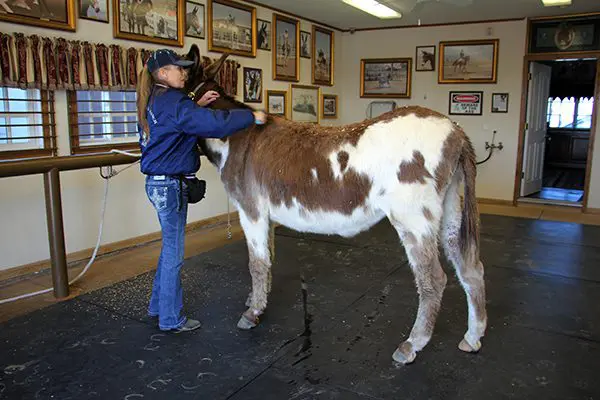

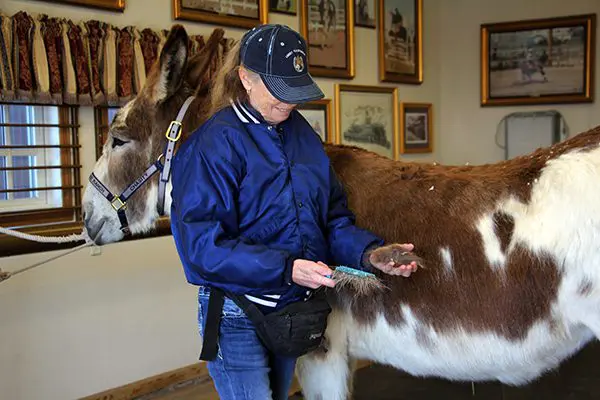
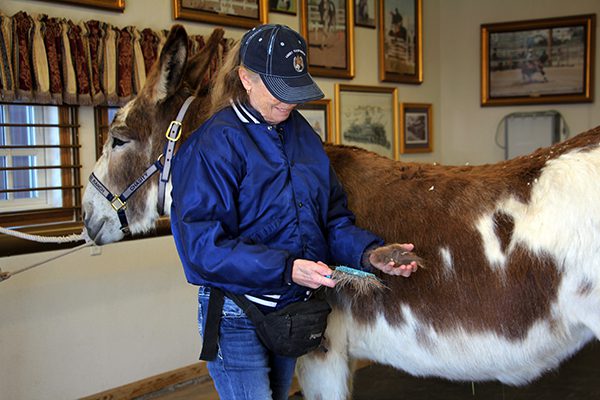
Chasity’s teats were as hard as a rock, but were draining a milky-looking substance. At first we thought she had just weaned a foal, but we found out later, that was not the case. At any rate, during grooming, I scraped the sticky drainage from her back legs. Then I discovered some crusty spots across her chest that resembled an old bot-hatching site that had not been addressed.
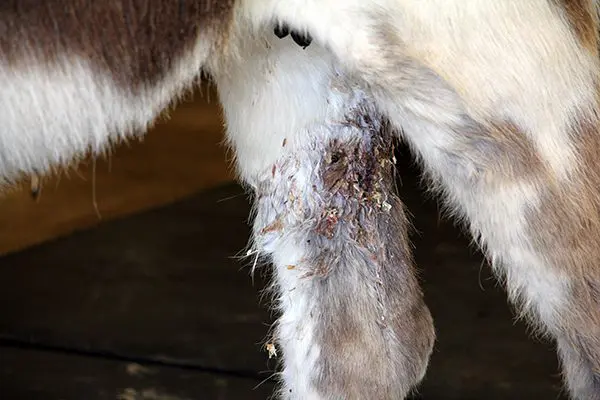
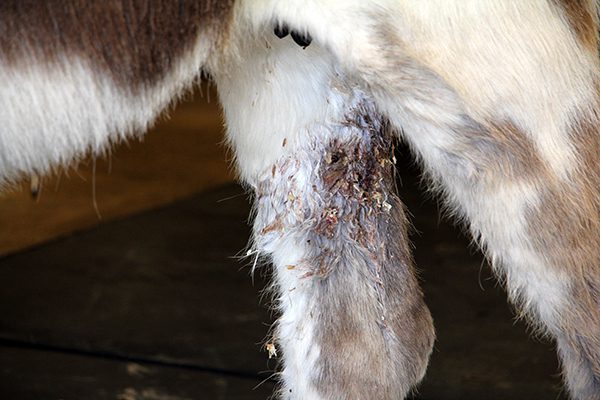
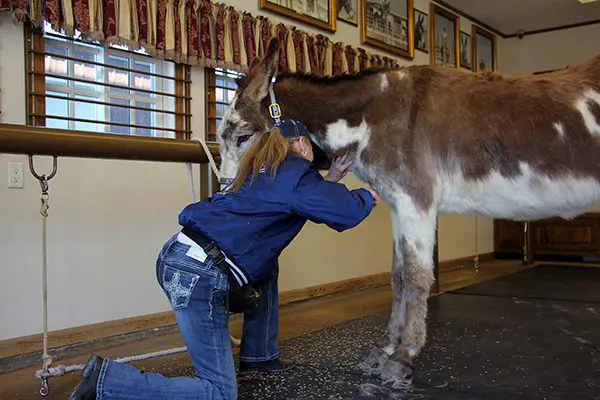
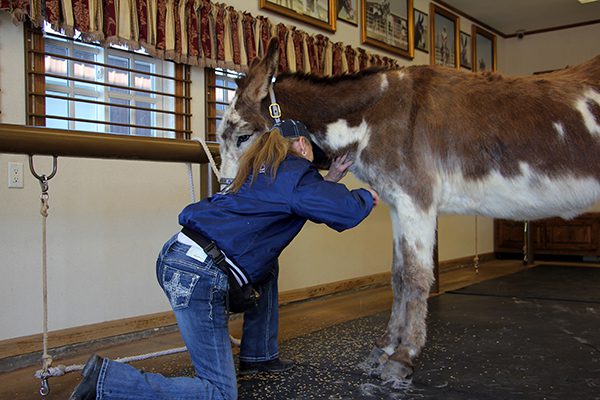
I used the shedding blade to scrape off the scabs and applied Neosporin to the area. Over several days now, the scabs are beginning to go away. Chasity enjoyed the scratching! They must have been itchy!
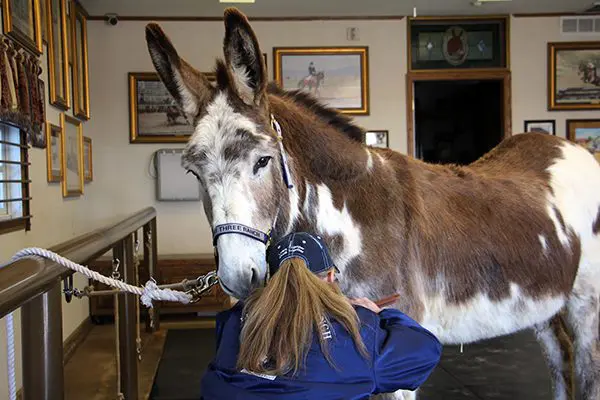
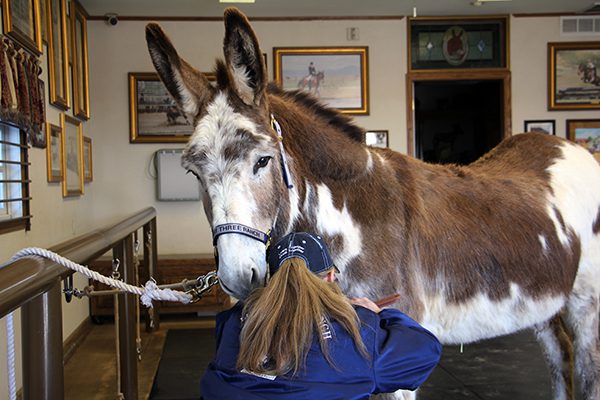
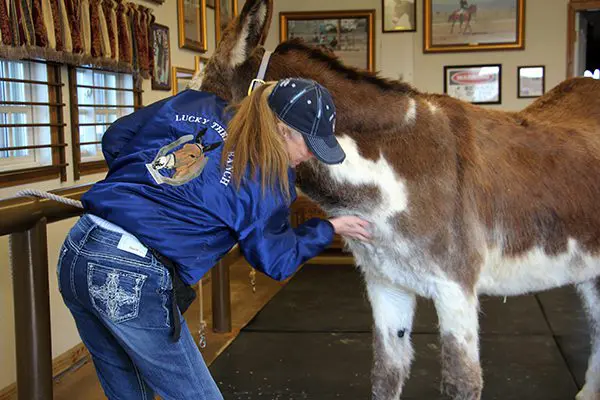
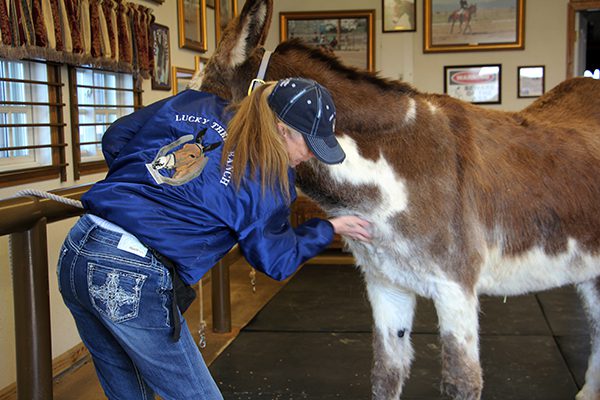
Chasity has an enlarged, crested neck and fatty deposits over her body that will need some attention. The crest has fallen over quite a bit, but I do think it is salvagable. It will just take the right kind of feed and exercise, and some time to correct.

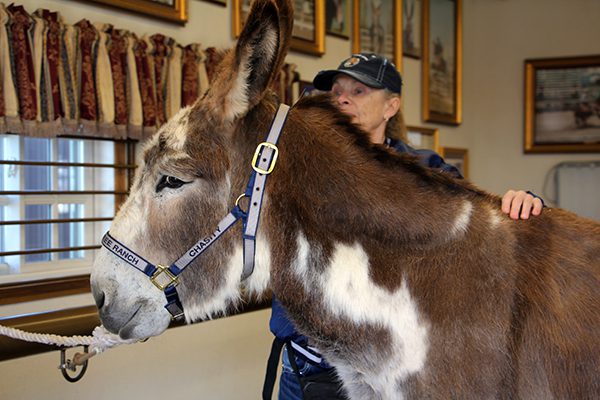
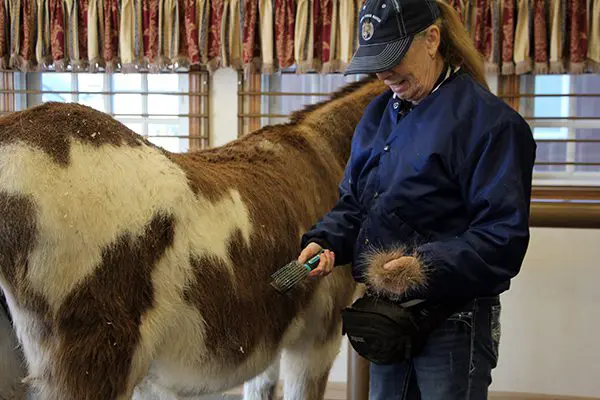
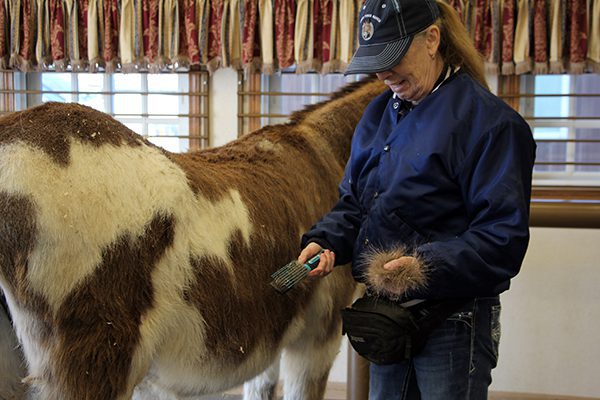
On her withers, Chasity has some scarring where the saddles previously used on her were rubbing and turned the hair white. She is also sporting a bit of Lordosis (sway-backed) which should not be seen in an animal of her young age of 13 years. This will undoubtedly result in irregular movement when seeing how out of alignment her spine is with these issues. Equines are not designed to carry weight on top. Rather, their structure supports carrying their weight below the spine. This is why is is so important to pay attention to core exercises to strengthen the top line and abs to prepare to support the rider’s weight. Just because they are big animals doesn’t mean they can automatically carry our weight without undue stress on their bodies.
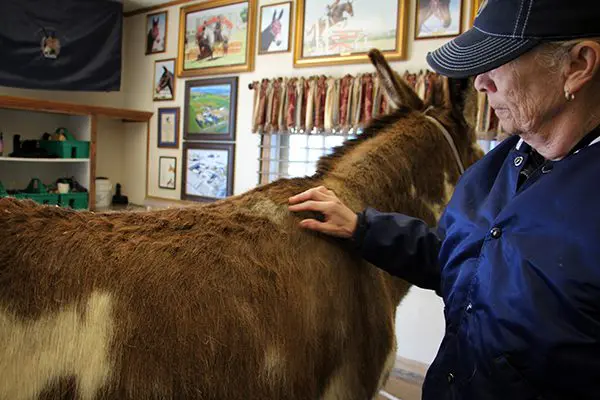
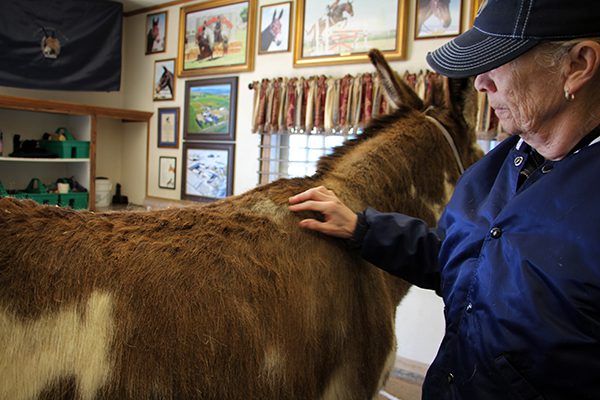
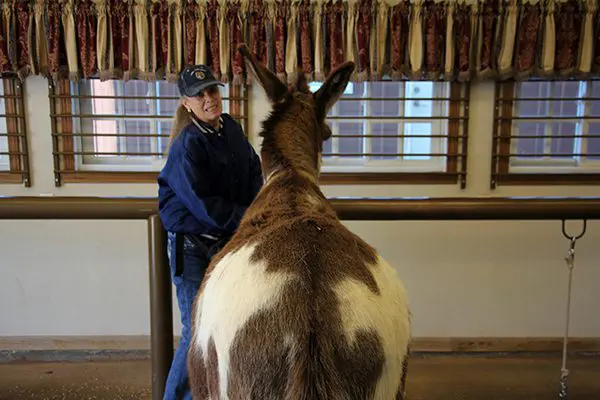
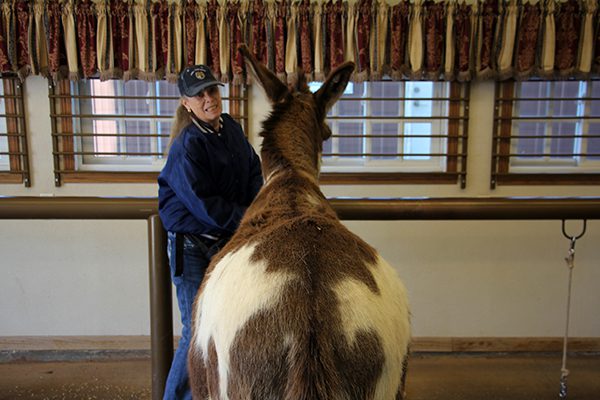
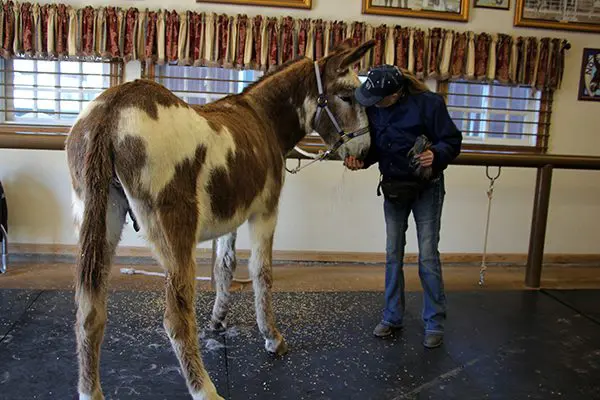
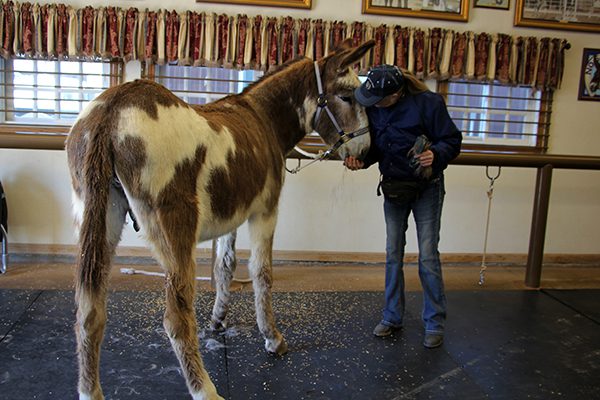
The crusty discharge on her legs is very sticky, so I sharpen my shedding blade before going after it. It is going to pull the hairs hard enough as it is. I want the shedding blade sharp so it will come off quickly and with as little pain as possible. Chasity appreciates my consideration for her!
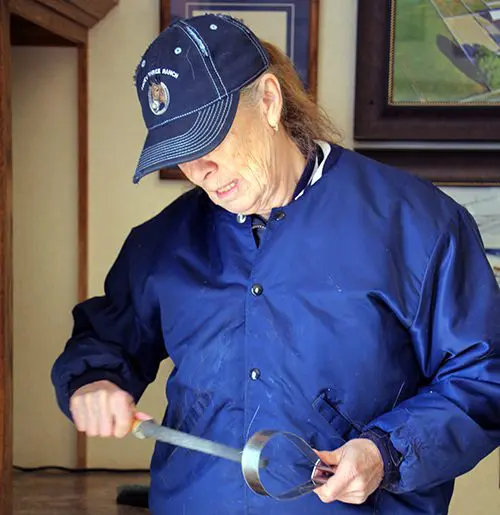
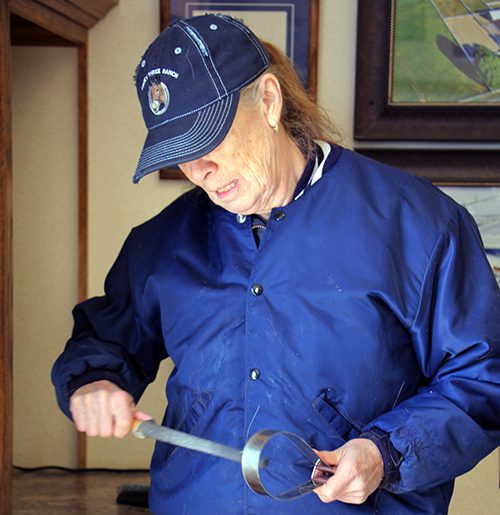
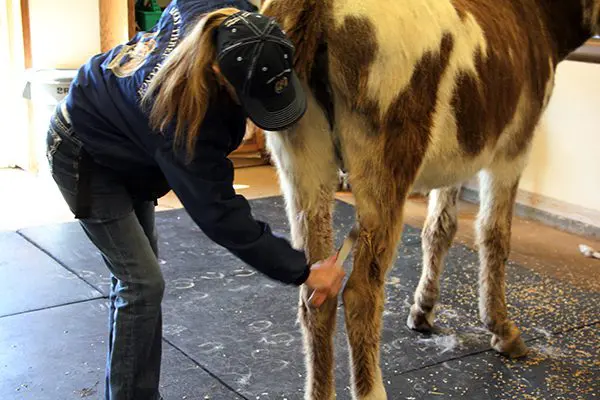
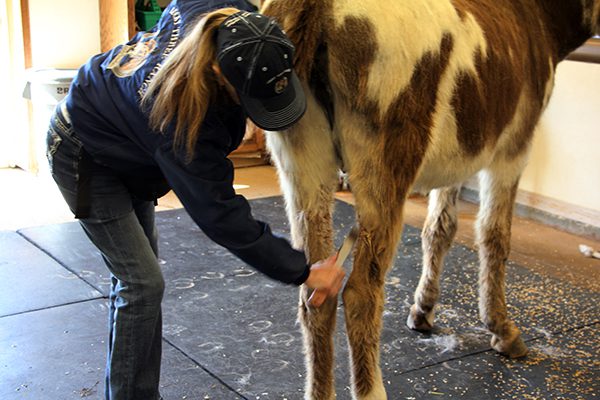
Last, but certainly not least, I sprinkle Johnson’s Baby oil in her mane and tail. This protects the hair from drying out during inclement weather, will promote growth and keep other animals from chewing on it. Then I square Chasity up one more time in preparation for either tacking up or for leaving the work station. Although this all seems simple enough, keeping this routine weekly will keep things from getting out of hand and grooming will remain easy each time. A reward of crimped oats from the fanny pack around my waist is always in order for standing quietly in good posture!
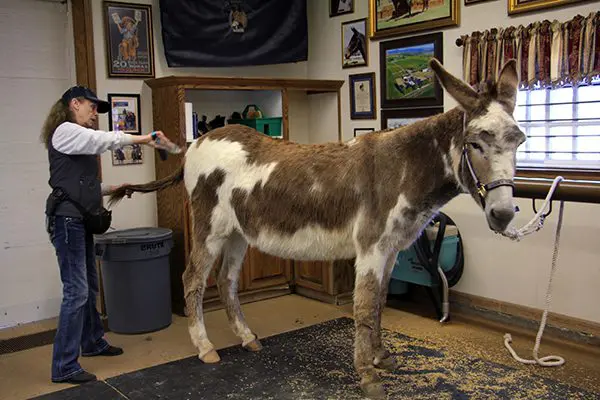
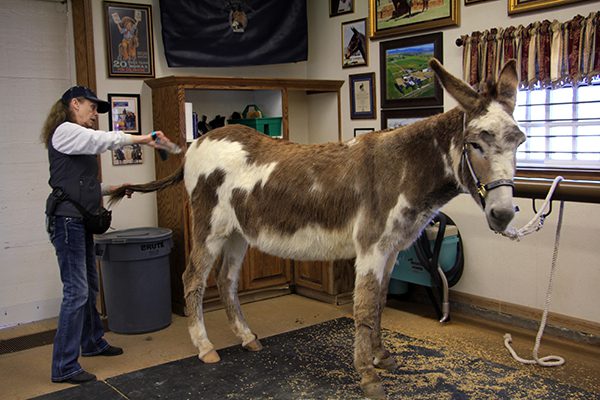

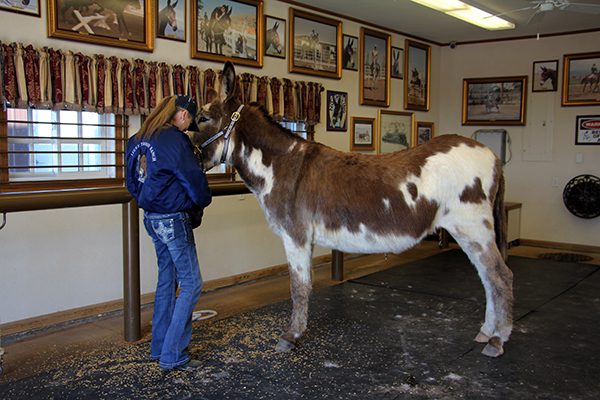
If you have multiple animals, just take your grooming tools in a bucket and your fanny pack full of oats with you to their stalls and do them there. If they are all in one pen in a herd situation, do not wear your fanny pack until they can all be rewarded at the same time, at the end of grooming. Body clipping is not a healthy solution and should only be done when showing. During shedding season, it is impossible to get it all done at once and still keep the hair coat healthy. It is easier if you do it weekly and take off the excess hair gradually. When grooming is done regularly and goes easily, it greatly reduces anxiety and bad behaviors.
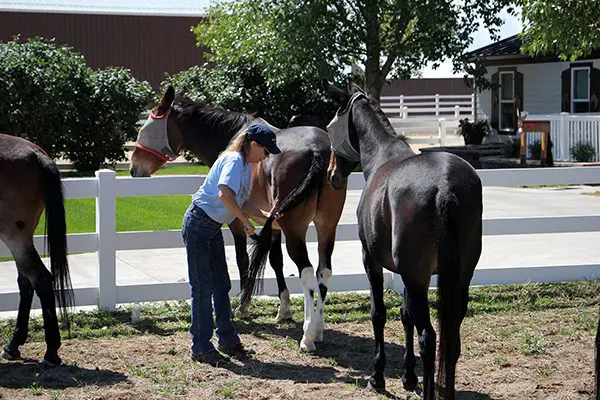
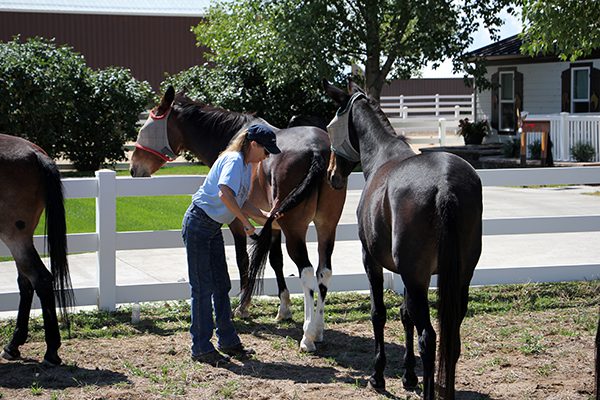
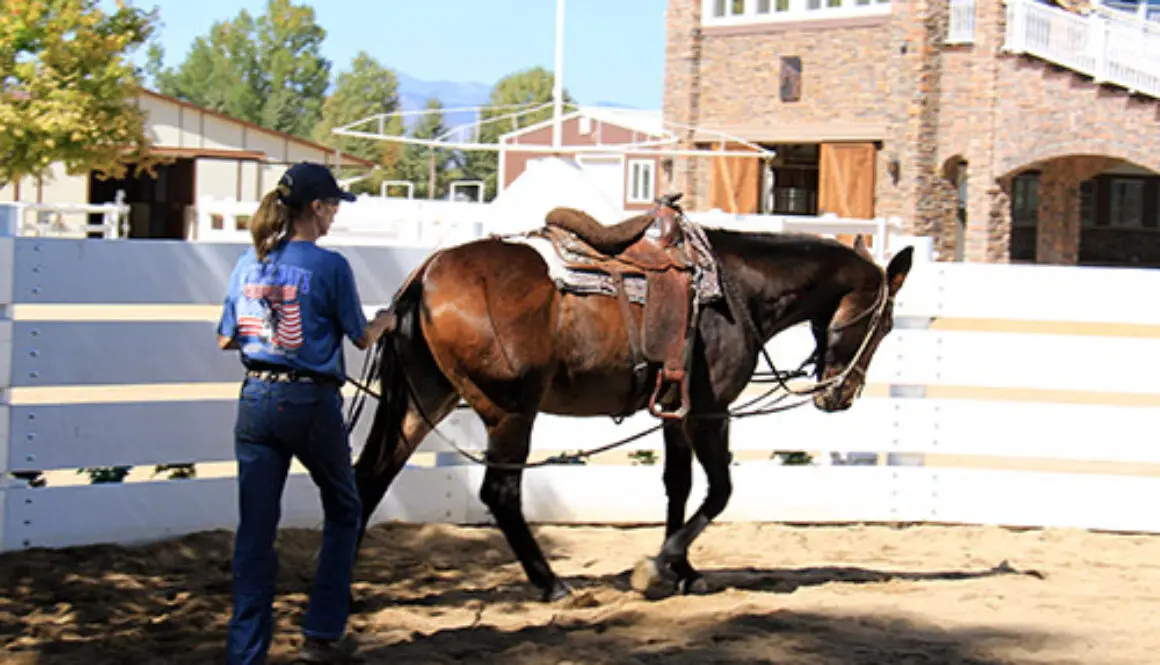
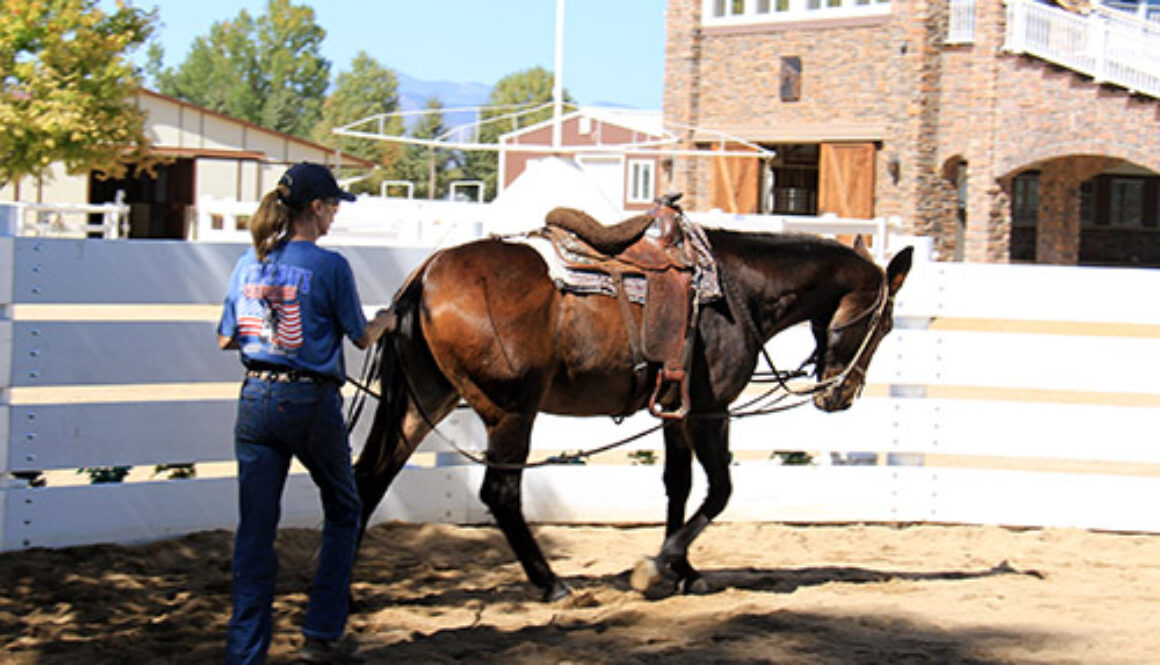
LTR Training Tip #59: Ground Driving Maneuvers
Getting a “feel” for the drive lines requires patience. Begin by using the “halt” command to change direction before making any turns to prevent confusion and resistance from your equine. Progress to making “S” turns through the middle of the round pen when your animal is ready. Once he is able to remain calm and obedient through the “S” turns, you can introduce the rein cues for the “Reverse”. All these maneuvers will help your equine to understand the rein cues coming from the drivelines before he is mounted and ridden.

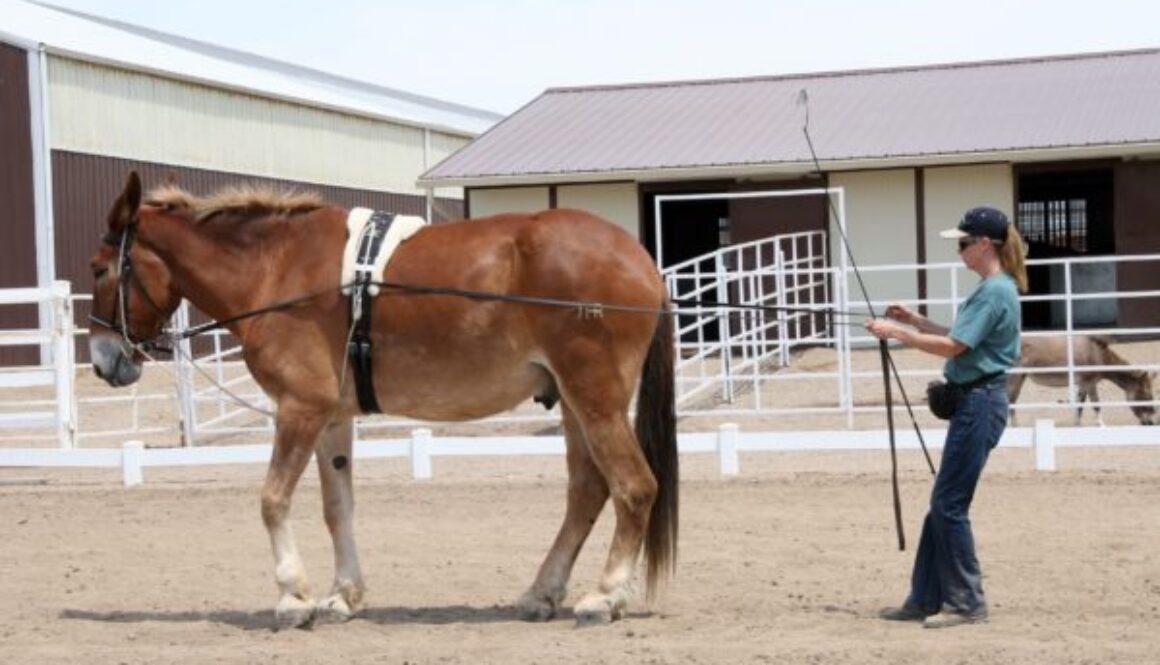
MULE CROSSING: The Rein Back
By Meredith Hodges

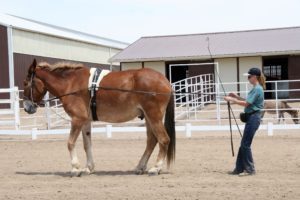
In order to get the best results, before teaching an equine to “rein back” you must understand the animal’s body mechanics and his mental attitude. The “rein back” is a reverse, two-beat, diagonal gait. When executing a straight “rein back,” the equine is unable to see what is directly behind him, but he can see peripherally on both sides. Because of the way the eyes are set in their head, mules can actually see all four feet when facing straight forward where a horse cannot. The depth perception of an equine is questionable at best, but when an equine must “rein back,” his vision is even more impaired because he can’t see directly behind him. This causes him to become tense because the equine must trust the trainer not to back his precious little rear into anything that might hurt him! If the trainer has been even a little abusive in the past, the equine will not be able to trust and will become resistant. On the other hand, if the animal has been brought along well and is being asked to “rein back” on the long lines, he may simply not want to “back over” the trainer. This could be perceived as disobedience when it is only consideration for the trainer.
In order to execute a straight and smooth “rein back,” the equine must be able to lower his head, round his back and step back and underneath himself easily with the power initiated from his hindquarters. If the rider has not prepared his equine for the “rein back” by allowing the animal to take one step forward first and round under his seat, the animal will be resistant. This is why one step forward before executing a “rein back” is essential. Otherwise, the equine may raise his head and hollow his back, making it very difficult, at best, to perform the “rein back.” If you have trouble visualizing this, get on your hands and knees and try it yourself to see how it feels, first with a hollowed back and then with an arched back.
Before you begin to “rein back,” take that extra couple of seconds to relax and prepare your animal. First, let him take one step forward. Then, alternately, squeeze your reins and ask him to lower his head a little (not too much at first). Keep your legs snugly hugging his barrel, and lift your seat ever so slightly by leaning forward just a little. Check over your shoulder to be sure that he won’t back into anything. Then, with corresponding rein and leg cues, squeeze and release alternately from side to side: first, right rein, right leg; then, left rein, left leg. By pulling first on one side and then the other, you actually allow him to see more directly behind, thus eliminating much of the apprehension that he feels when he cannot see. Pretend that you are pushing him backward with your legs, directly after giving a gentle tug on the corresponding rein. In the beginning, be satisfied with one or two steps, and don’t forget to praise him.

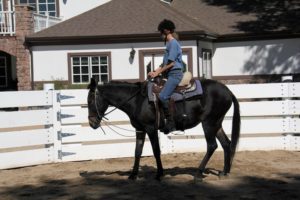
Horses and mules learn to “rein back” more easily than donkeys. As far as donkeys are concerned, why go backward when you can turn around to go forward? Because donkeys have a natural agility, this is not such a far-out way for them to think. However, if a donkey tried to turn around on a narrow trail with a rider aboard, his balance could be severely affected. Chances are, the donkey would make it, but the rider might not. The donkey needs to learn to “rein back” on command, because safety is of the utmost importance.
The simplest way to encourage your donkey to “rein back” is to ride or drive him into a three-sided tie stall, or anywhere that he has no way to escape but backward. Ask him to “rein back” with the cues outlined, and praise him for each step backward. If you are ground driving, just alternate long line pressure while you step backwards in unison with his back legs. Keep your squeeze/release action on the long lines minimal—pulling on your donkey’s mouth too much will only defeat your purpose. If your donkey is hitched to a vehicle, make sure that the weight of the cart or carriage that he has to push is not too heavy for him to manage. Adjust the breeching tightly enough so that your donkey can lean into it with his rear, and be sure that it is not so low that it will inhibit the motion of his upper hind legs.

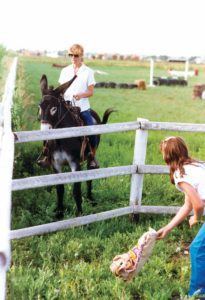
I can’t count the hours that I have spent sitting on-board my donkey, waiting for a foot to move, giving the cue to just one side over and over again. Patience is the key to success with any animal, but with donkeys, it’s a necessity. Be patient and deliberate with your training. Don’t get upset, and don’t try to be forceful. Remember, he has to move sometime. Even donkeys get bored standing in one place for too long!
To learn more about Meredith Hodges and her comprehensive all-breed equine training program, visit LuckyThreeRanch.com, MEREDITH HODGES PUBLIC FIGURE Facebook page, or call 1-800-816-7566. Check out her children’s website at JasperTheMule.com. Also, find Meredith on Pinterest, Instagram, MeWe, YouTube and Twitter.
Covered in TRAINING MULES & DONKEY: A LOGICAL APPROACH TO TRAINING, TRAINING WITHOUT RESISTANCE, EQUUS REVISITED and A GUIDE TO RAISING & SHOWING MULES at www.luckythreeranchstore.com.
© 2014, 2016, 2017, 2024 Lucky Three Ranch, Inc. All Rights Reserved.
This article is an excerpt from the book, Training Mules and Donkeys by Meredith Hodges, 2014

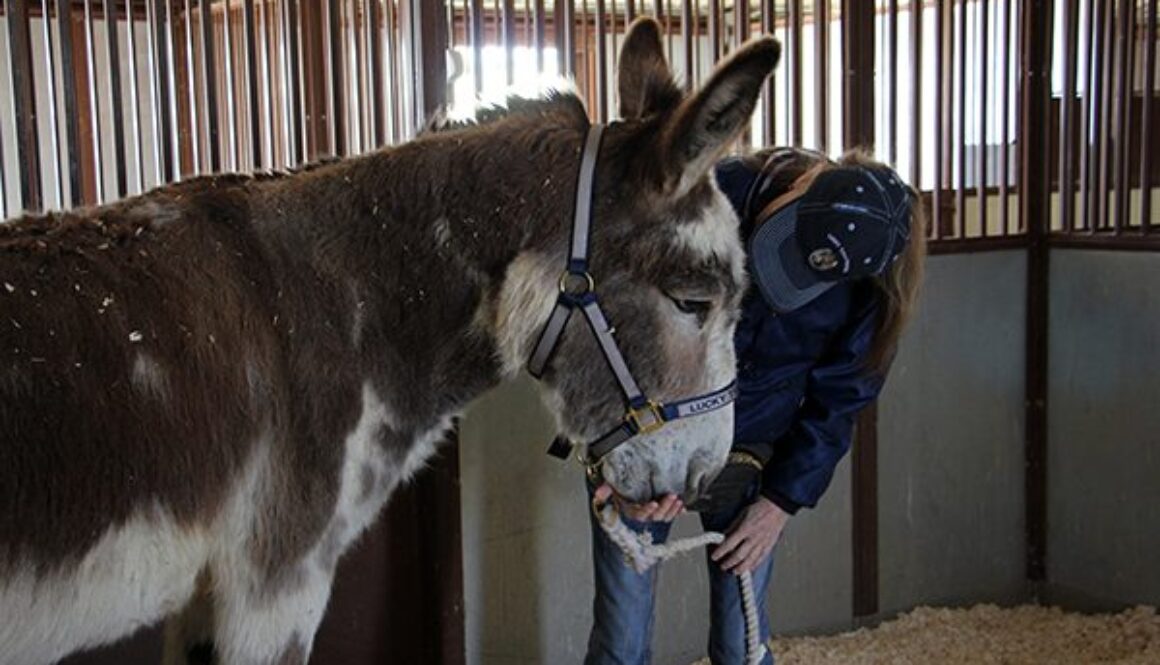
Chasity’s Challenges: Learning to Come to Be Haltered: 4-14-20
4-14-20
We determined that Chasity had cataracts in both eyes, worse in the right eye than in the left. This made her hesitant to come to me at the stall door to be haltered. She wanted to come to me, but she just wasn’t sure. I insist that ALL my equines come to the stall door or gate to be haltered, so I knew I would have to train her and win her trust to get her to do it like all the others.
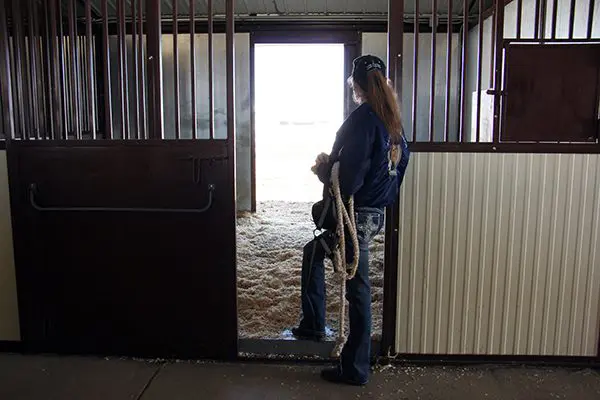
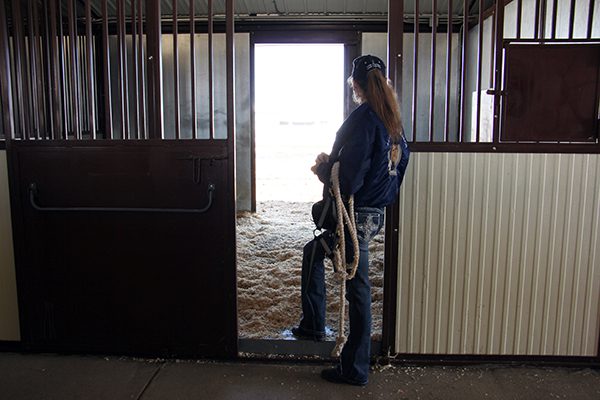

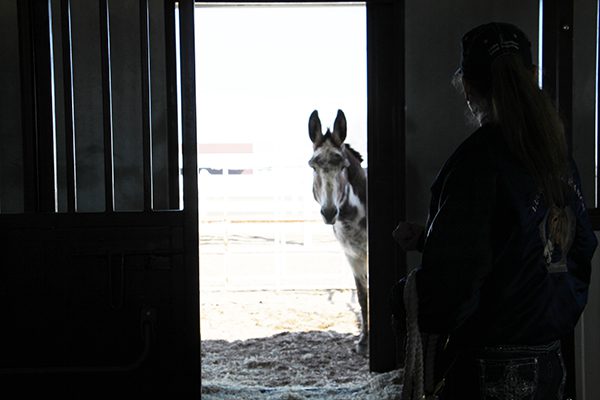
When she went away from the door, I simply stepped to the inside door of her stall and encougraged her to come to me from there, but she was still suspicious and ran to the far side of the pen. I just walked toward her and spoke in a calming fashion telling her to “Whoa.”

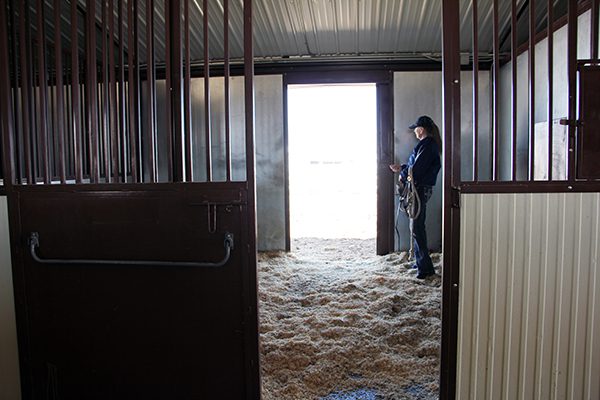

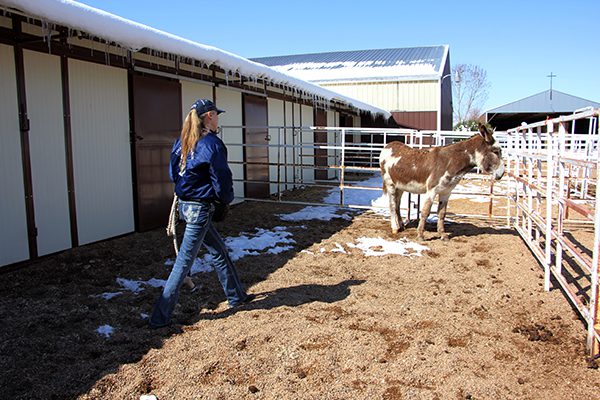
She began to get nervous and started to weave away from my approach, but before she could suck me into the back and forth along the fence, I stepped to the side, waved her into the stall and shut the door behind her.

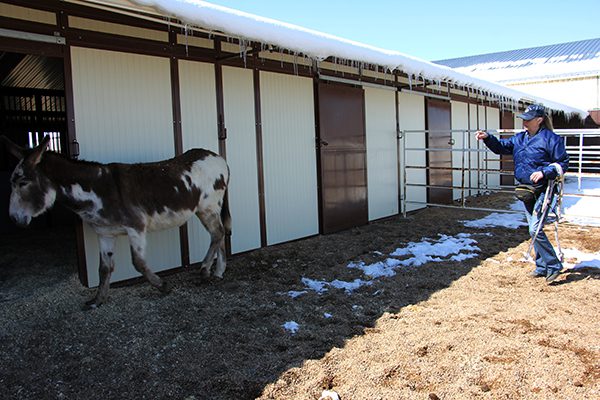

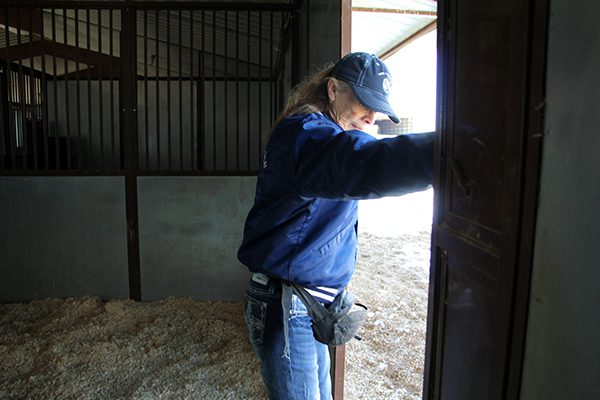
She knew she was confined and went to the corner of the stall. I knew she could not see me very well with her right eye, so I opted to walk along the wall to her left side and approached her from the left side. Before attempting to put on her halter, I told her what a good girl she was and offered a handful of oats. I allowed her to finish chewing them before I put on the halter.

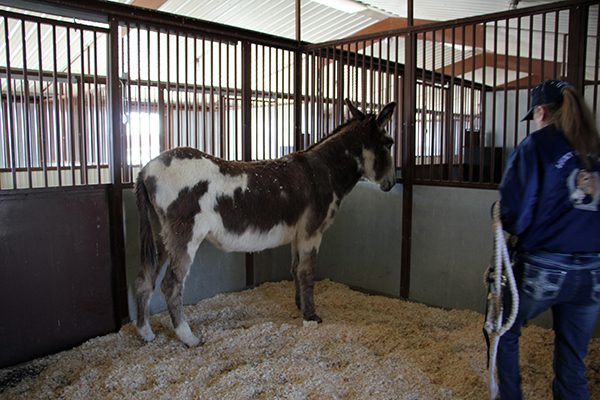

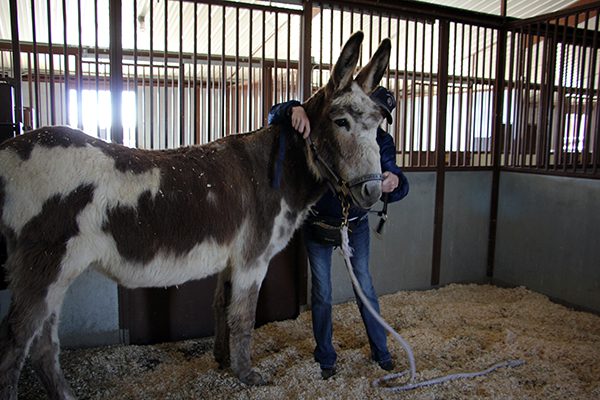
I was careful about putting on the halter slowly so I would not startle her and then gave her a reward of more oats for standing still. She was grateful and again, I waited until she was finished chewing before asking anything more from her.

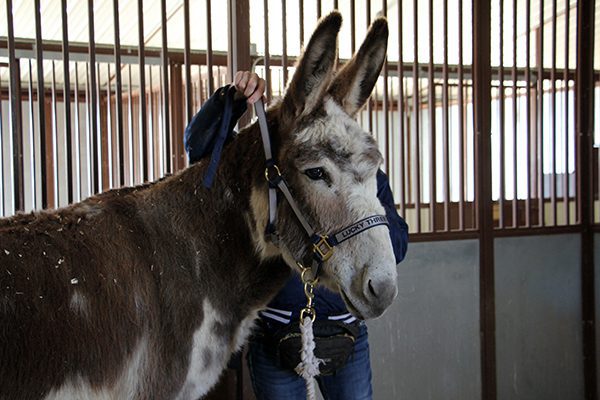

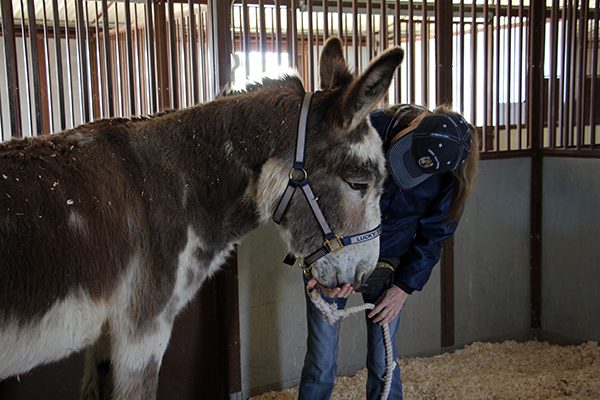
Then I asked her to square up with equal weight over all four feet. This would become the protocol EVERY time she stops. I want to change her posture and begin to increase her core strength in good postural balance. The repetition of this movement will change her habitual way of standing.

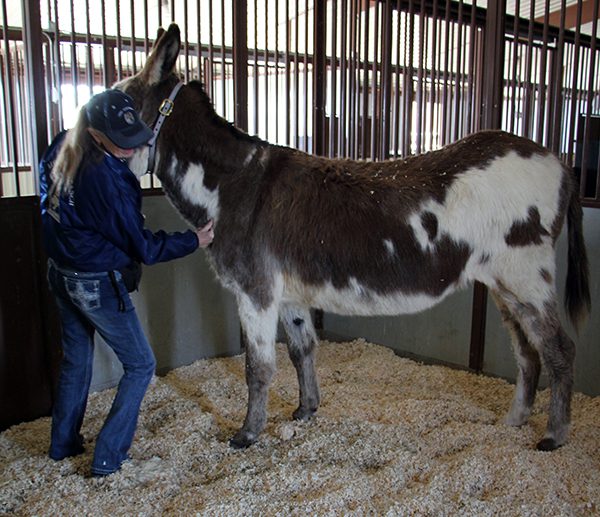

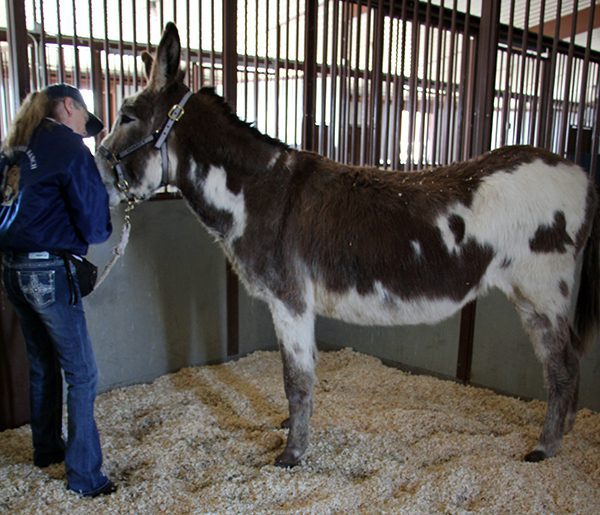
I rewarded her again and then took off the halter while standing by the open door and watched her chew.

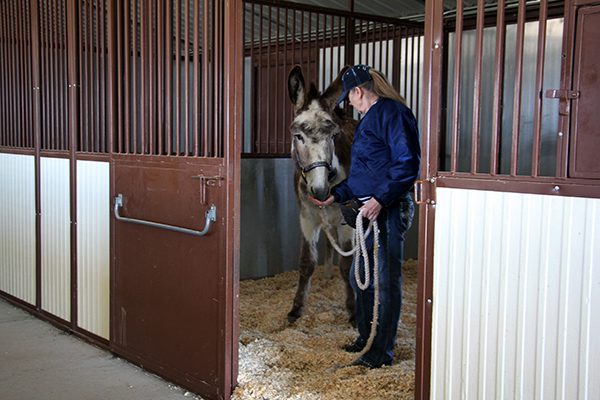

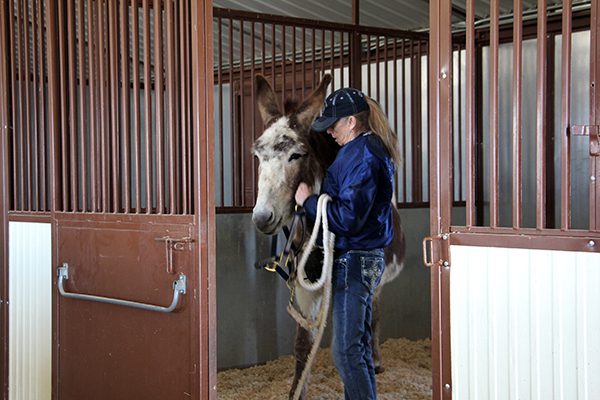
I rewarded her for NOT forging through the door, waited for her to finish chewing and then put the halter back on.

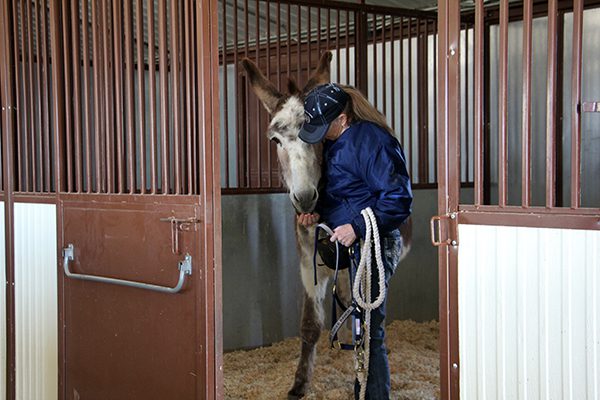

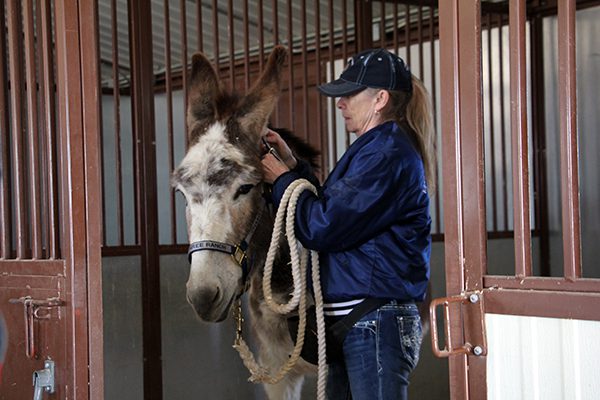
We then turned around and walked to the back of the stall to open the door I had closed, did another turn and exited the stall. She will soon tire of me going into the pen and chasing her into the stall. One thing that is also VERY important in halter training is the type of halter that you use. Although they do provide leverage, rope halters have pressure points everywhere there is a knot and the biggest knot is right underneath their ear. Try putting your index finger underneath your ear and ask yourself how long you could stand it just being there? Now put the palm of your hand under your ear. How does that feel? Nylon webbed halters lay flat against their face and do not cause distractions like rope halters will. The equine can focus their attention 100% on YOU and not be distracted by subtle pressure points!

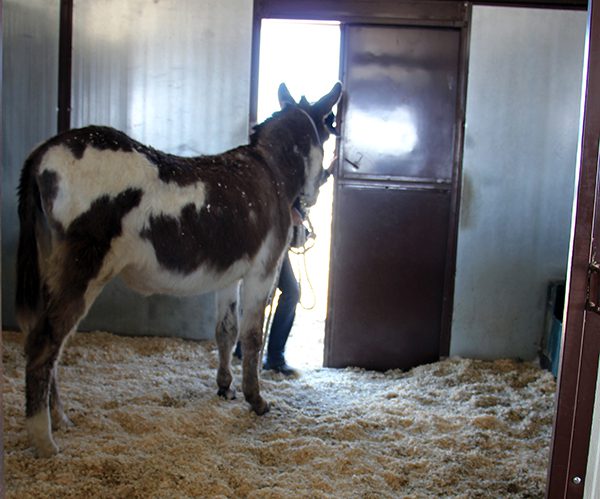

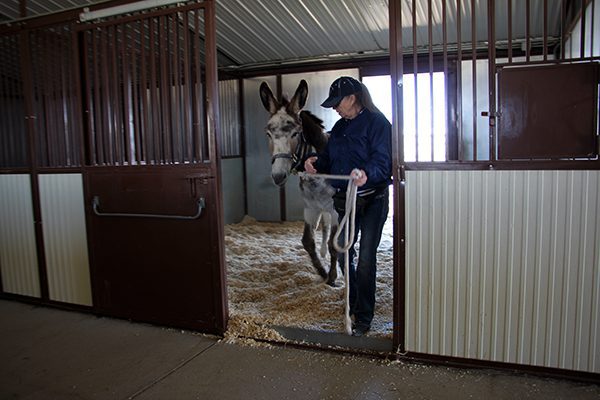
I would much rather encourage my animals to comply happily and willingly than try to use any kind of forcible leverage with them. I have found it to be unnecessary. Building a willing bond between you prevents them from becoming herdbound and being sour about leaving their friends. It enhances the relationship between you so they really WANT to go with you. This particular routine gave Chasity an idea of what to expect and resulted in her coming to the stall door willingly when I call her after only two times of having to proceed this way…completely resistance free. She is a very intelligent girl and learns quickly despite the disadvantage of cataracts. I have other equines with eyesight issues that have been successfully trained the same way. The key is patience, understanding and a careful, respectful and sensible approach.

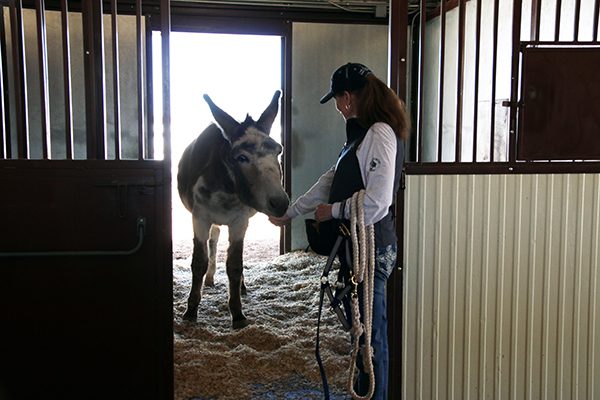

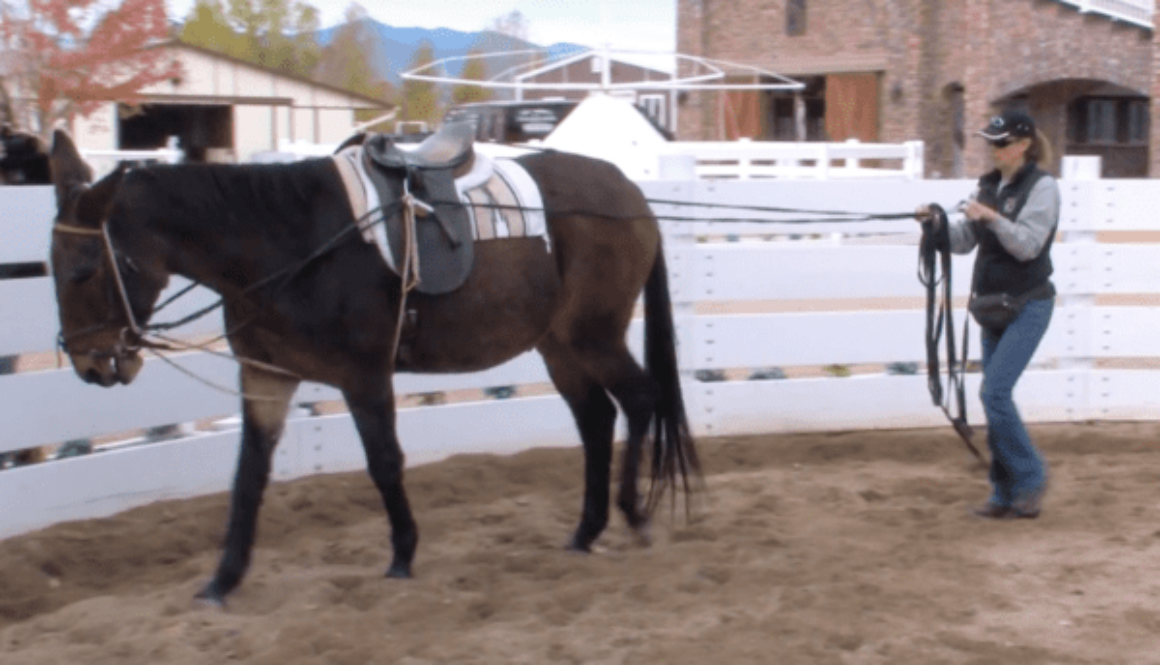
LTR Training Tip #58: Getting in Sync on the Drive Lines
Good posture, consistent rhythm and regularity of footfall patterns are key to achieving calmness in your equine. After getting into sync with your equine on the lead rope by matching steps with his front legs, getting into sync with his back legs will help him to stay calm while ground driving him from behind at the walk.

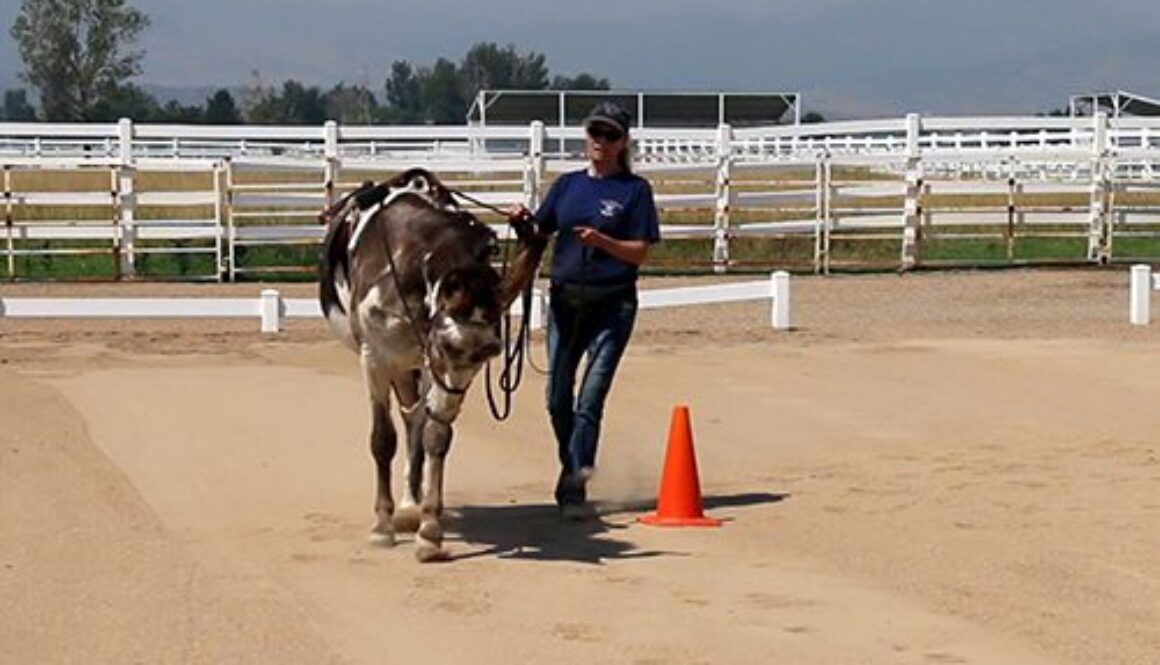
LTR Training Tip #57: Transition To Drivelines
Once your equine has become proficient in his posture and balance, leading over obstacles, and various stages of lunging, you are ready to put your equine on the drive lines in the round pen. Find out how to make this transition successfully.

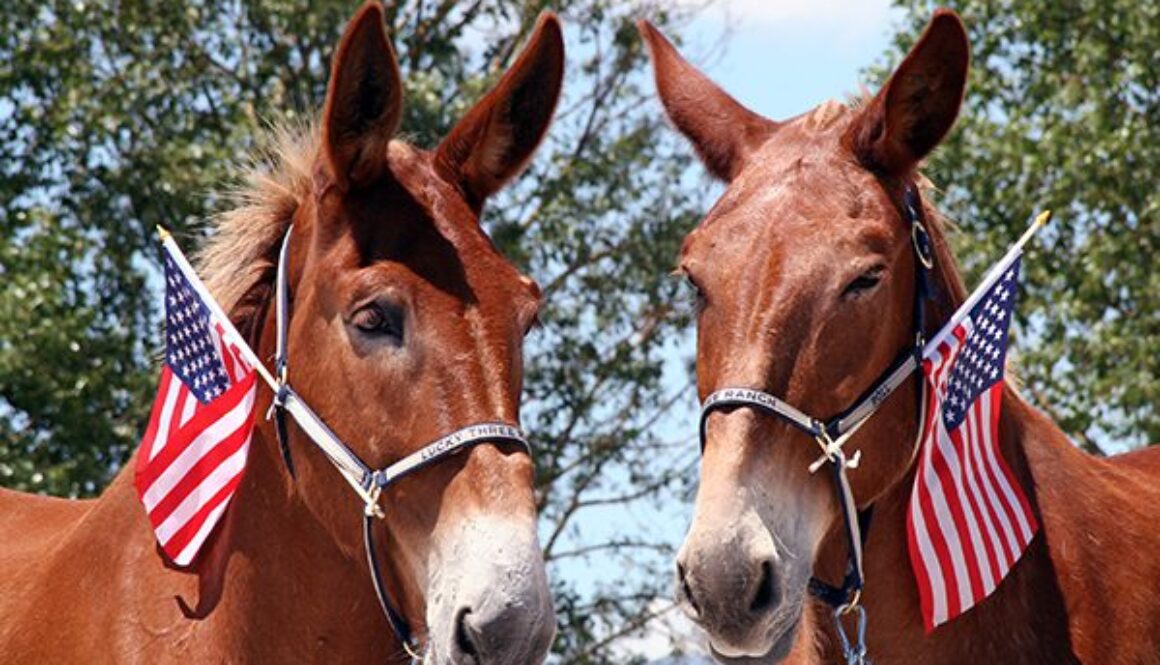
MULE CROSSING: In Appreciation of Mules
By Meredith Hodges
We have all heard the numerous negative myths about mules that abound, but have you ever thought of a mule as a hero, as an extraordinary member of our society? The mule’s history can be traced back to Biblical times, and in those days, he was known as the preferred mount of royalty. Given his ancestry, this should not be surprising. After all, is he not the offspring of the chosen mount that Jesus Christ rode into Jerusalem? As Jesus was the Son of God, so is the mule the son of the chosen donkey. And he has much to teach us about ourselves and our world—if we could only learn to observe and listen carefully to what he is telling us. The mule can be a catalyst for health, happiness and prosperity, but we must learn to do our part in appreciation of him.

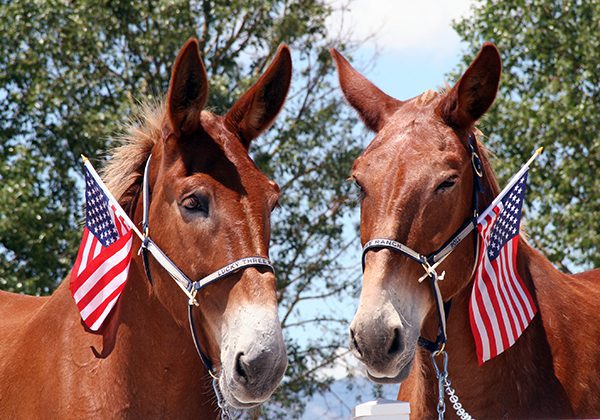
As author Melvin Bradley notes, “Democrats in mule states have always been friendly to mule-loving voters. With a farm population of 25 percent of the total, votes from mule people could make a difference.”1As presidential candidate Harry S. Truman discovered, this was politically beneficial information and he used it wisely. Finally, on May 31, 1995, Governor Mel Carnahan signed a bill designating the Missouri mule as the official state animal.
When people are open and fortunate enough to be able to engage in intimate communication with the mule, they soon discover the redeeming and heroic characteristics of the donkey (that are naturally present in the mule). The donkey is the embodiment of various moral truths, which is why he is used as an appropriate hero in numerous fables. He possesses the ability to serve without judgment of his master. He is affectionate, thoughtful and humorous and carries his burdens without complaint. We are often dismayed by the true reflection of ourselves that we are destined to see while in his presence. The donkey is a creature of wonder and augury, and glimpses of these same characteristics can be seen in the mule. Although the donkey is the symbol of the Democratic Party, his effect on people is subjective and universal, and is not restricted to just one group.
I’d like to share one of my favorite stories, illustrating the mule’s legendary endurance and great heart. According to author Walter Rickell, “When General George Custer made his campaign into the Black Hills in early 1870, Buffalo Bill led him the first day as his guide. Custer and his staff were on their finest horses brought from the east, and they were prancing and ready to go. Suddenly, Buffalo Bill appeared on his little grulla Comanche mule, Mouse. Cody paid no attention to the way the officers ridiculed him and the mule—Cody had ridden Mouse before and found he could run a good lick, but his strongest point was his endless endurance. Custer, noting it was Cody’s intention to ride the mule, called a halt and informed him it was no time for pranks, that they had to travel fast, and Mouse could never stay out of their way. Cody said nothing, touched Mouse with his spurs, and led off, the column following. By the early afternoon, in terrific heat, the horses were lathered, and Cody had to stop several times for the column to catch up. The general was surprised that, at camping time that night, Mouse was still in the lead. Custer tried to trade his fine horse for the mule. Cody rode Mouse back that night over the same trail.”2

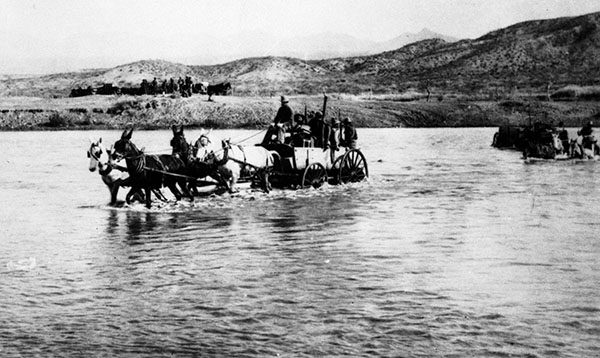

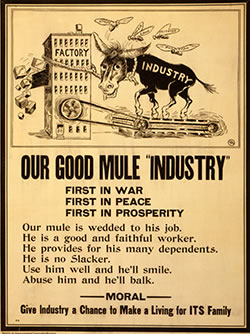
Those who work with mules know that interacting with them can keep a person healthy and happy. The typical mule person gets up early in the morning to feed and water his mules, and then goes back to his house for his own breakfast. Then it’s back to the barn to harness or saddle up and make way for the day’s activities with the mules. There is much to learn from a mule in every interaction, and if he isn’t doing what we want, then we probably haven’t asked the right way. When we do, he complies and, in the process, teaches us about real patience, love, respect and good manners. There is no more loyal friend and companion than a mule. As the old mule skinners will tell you, you either love ‘em or you hate ‘em. You either get along with them or you don’t—there’s no in between with a mule.

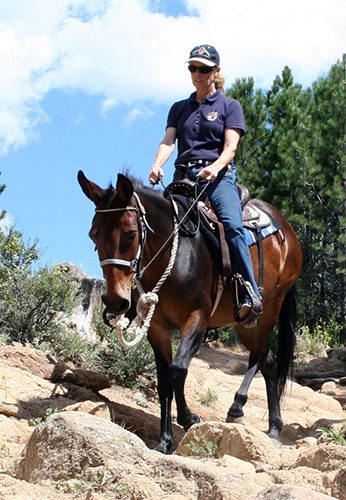
“Mule Fever” happens when you find yourself hopelessly involved with a mule…or many mules! Suddenly, there is no other equine that will do. Many people liken a mule to a dog, but dogs are unconditionally faithful and submissive, whereas the mule challenges your soul. He innocently challenges you to be the best (or worst) person you can be—more like very young children would do. You might as well be tangling with an elephant if you don’t learn how to correctly ask the mule to do what you want. Most folks end up just dangling at the end of a lead rope or hanging on for dear life during a runaway—if they are lucky enough not to get dumped on the ground and possibly stomped on or kicked! If a person finally learns what a mule has to teach, there cannot be a more reliable, intelligent and loyal friend. At the end of a day spent with mules, one is tired, but it’s a good tired. The activity has increased circulation throughout the body, making the body tired and the mind alert. This makes for a good night’s sleep, and the next day, the cycle begins again—with joy!

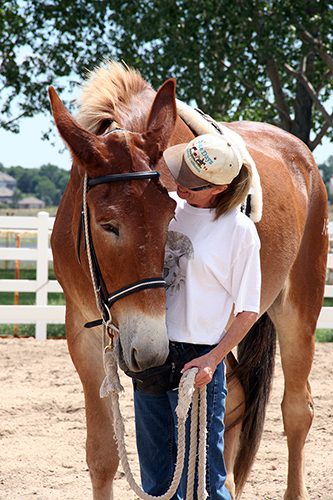
In 1985, an attempt was made by the Lynchburg Mule Trader’s Association, supported by the leadership of the Jack Daniels Distillery and U.S. Representative Jim Cooper, to designate October 26th as Mule Appreciation Day, in commemoration of George Washington’s receipt of Royal Gift, America’s first mammoth jack, from the King of Spain. Jack Daniels itself sponsored the first Mule Appreciation Day to gain publicity and support for the petition, which was passed by the House of Representatives by a substantial margin, but failed to pass in the Senate. The bill was later sent to a referral committee, where it languishes today. (Leave it to Congress to get our half-ass half-passed!) However, the spirit of mule lovers is undaunted—Mule Appreciation Day rose from the dead and has been celebrated ever since, even without the blessing of Congress. We red-blooded Americans love and appreciate our mules. Gratitude and appreciation are never outdated!
To learn more about Meredith Hodges and her comprehensive all-breed equine training program, visit LuckyThreeRanch.com, MEREDITH HODGES PUBLIC FIGURE Facebook page, or call 1-800-816-7566. Check out her children’s website at JasperTheMule.com. Also, find Meredith on Pinterest, Instagram, MeWe, YouTube and Twitter.
Covered in TRAINING MULES & DONKEY: A LOGICAL APPROACH TO TRAINING, TRAINING WITHOUT RESISTANCE, EQUUS REVISITED and A GUIDE TO RAISING & SHOWING MULES at www.luckythreeranchstore.com.
© 2011, 2012, 2014, 2016, 2024 Lucky Three Ranch, Inc. All Rights Reserved.
1The Missouri Mule: His Origin and Times, Volume II, by Melvin Bradley, Curators of the University of Missouri, page 353.
2The Misunderstood Mule, by Walter Rickell, Reproductions West, Burbank, CA, 1976.
![]()
![]()

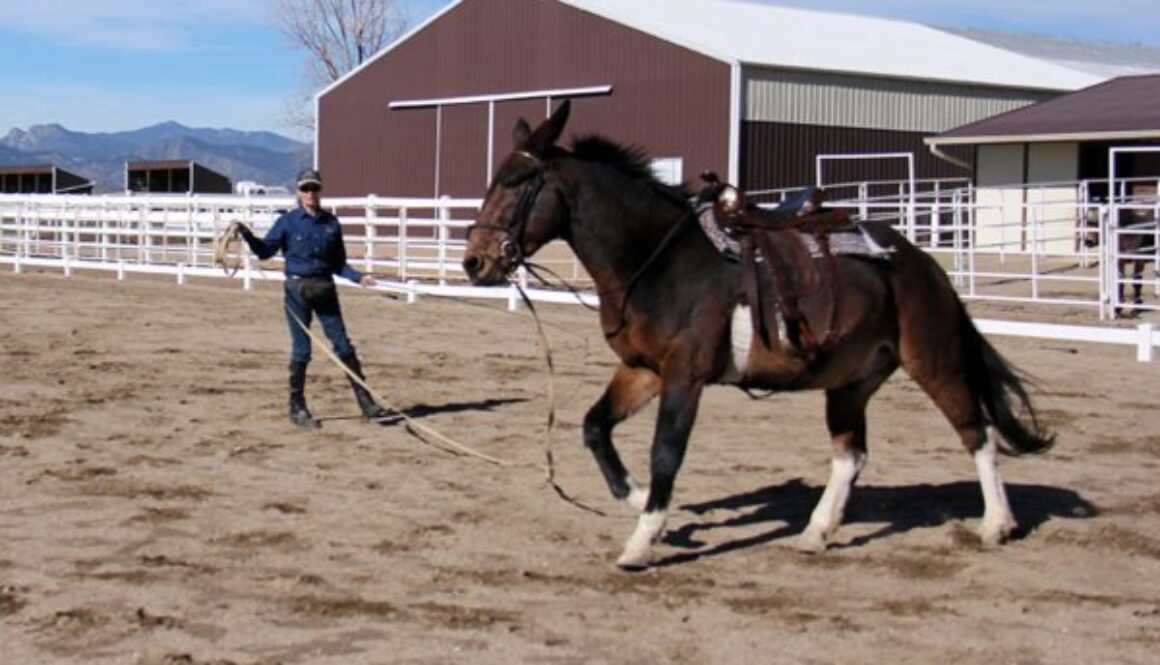

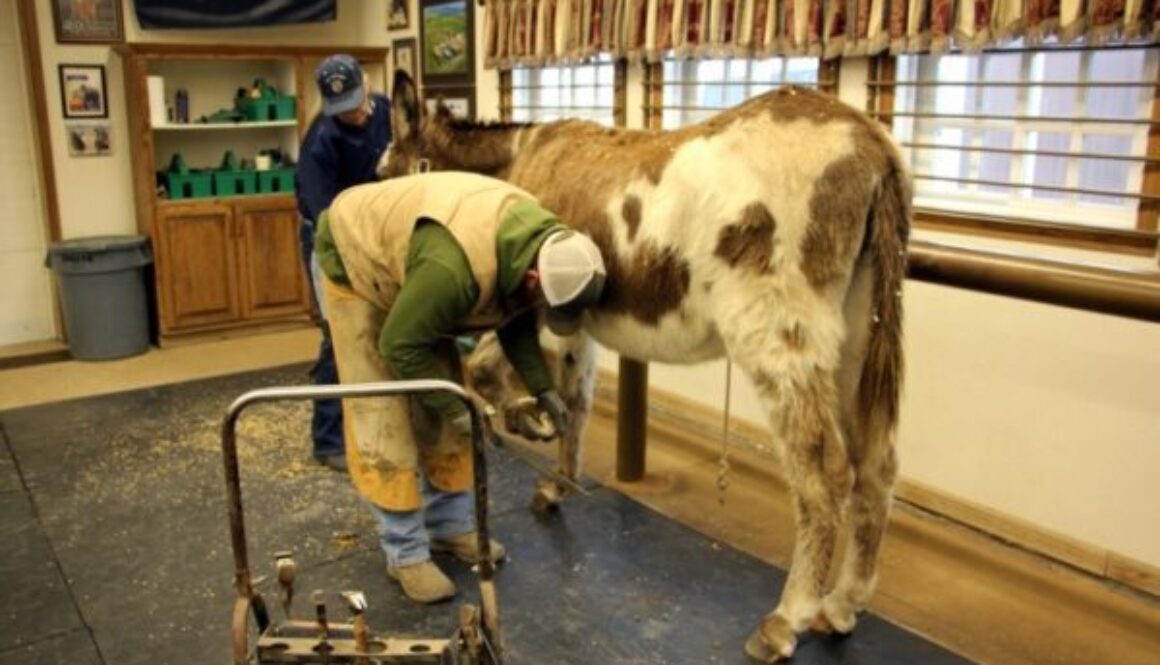
Chasity’s Challenges: Removing Chasity’s Shoes 4-2-20
4-2-20: Our farrier, Dean Geesen came out to take care of Chasity’s feet. The first order of business was to introduce himself with an offer of oats! She did not want my veterinarian, Greg Farrand, to pick up her feet on Tuesday, but during grooming on Wednesday, Ranch Manager, Chad and I cleaned her feet, so she was much more compliant today. Getting her hooves in balance will greatly improve her overall body balance. And, getting the shoes off her overgrown front feet will enable the frog to do its circulation job!




Her front hooves were exceptionally long with Borium shoes (non-slip) on them and her back feet were long and uneven. All four feet had been trimmed out of balance.



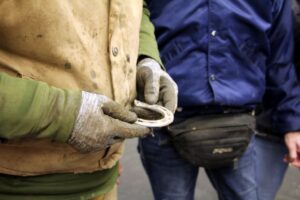
Dean showed us how the shoes had been abnormally and unevenly worn.




Dean removed the shoes and trimmed her hooves in the best balance that he could for now. Her hooves had been pressured to one side and would need several trims to get them properly symmetrical in alignment.

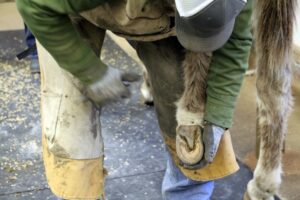
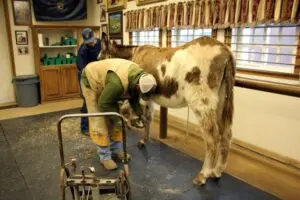

Dean is a correctional farrier and knew just what to do to get her started off on the right ‘foot’ so to speak. It was a definite improvement from where she was!




She will need to be checked periodically to keep her feet in good shape as she moves forward in her therapy. Sometimes these kinds of things just take time!




She was rewarded with oats in appreciation for her cooperation! Chasity seemed thankful for her newly balanced hooves.


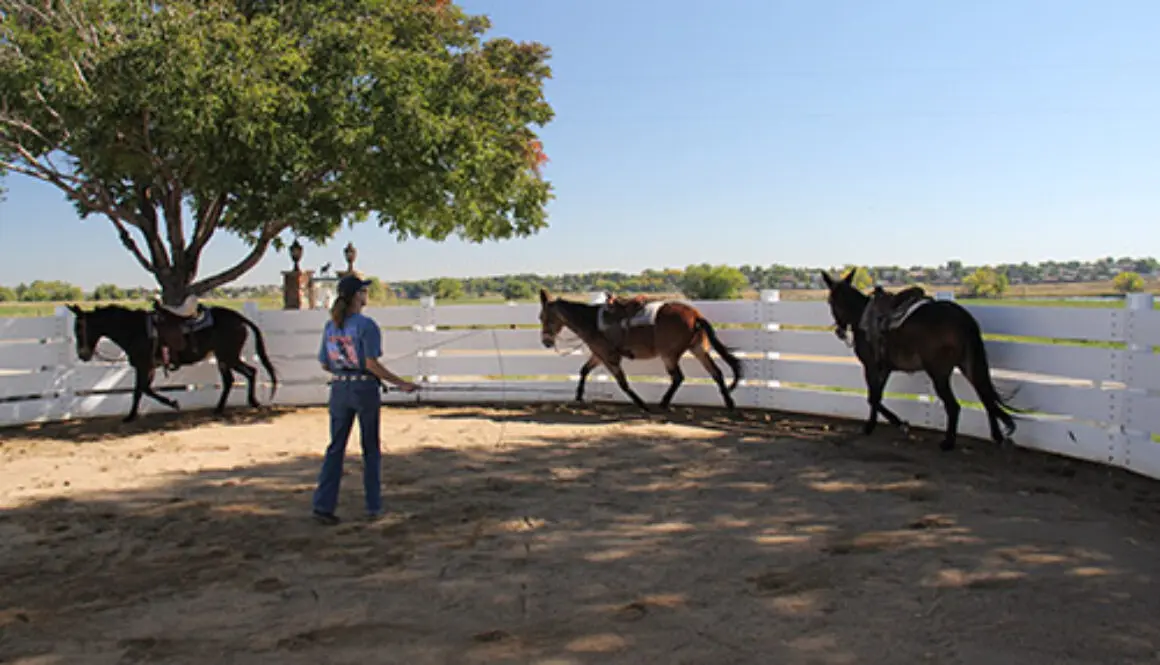
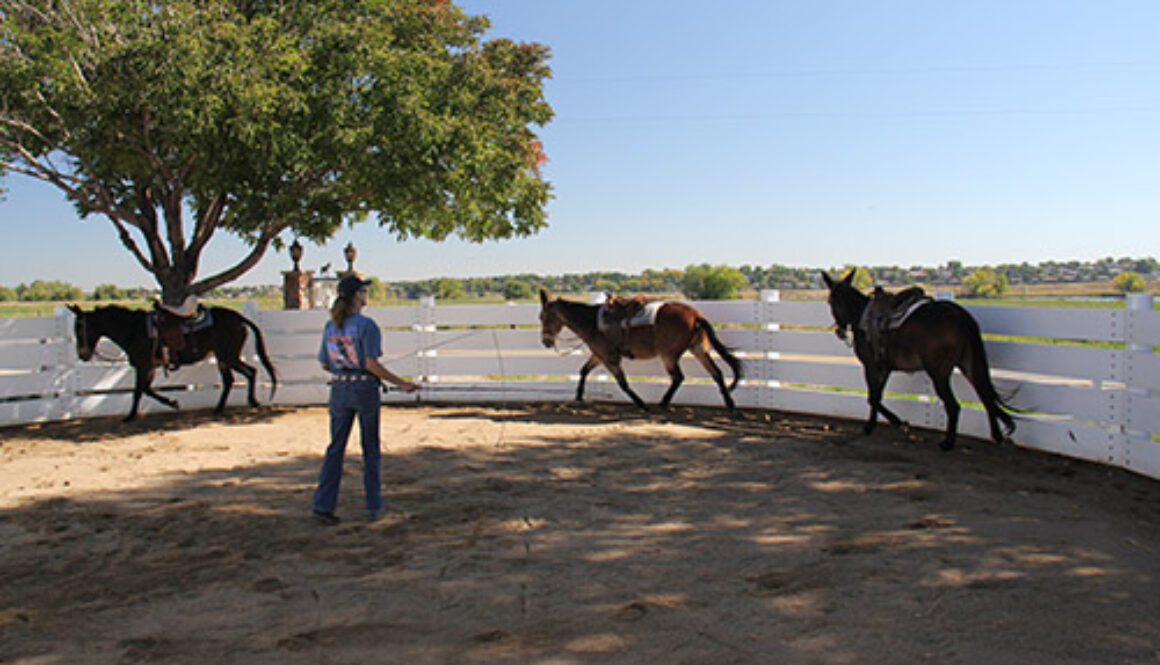
LTR Training Tip #55: Lunging Multiple Equines
It’s easy to lunge multiple animals when they are all trained the same way with sequential, logical and purposeful training practices. Learn what you and your equines need to know to lunge together safely and successfully!

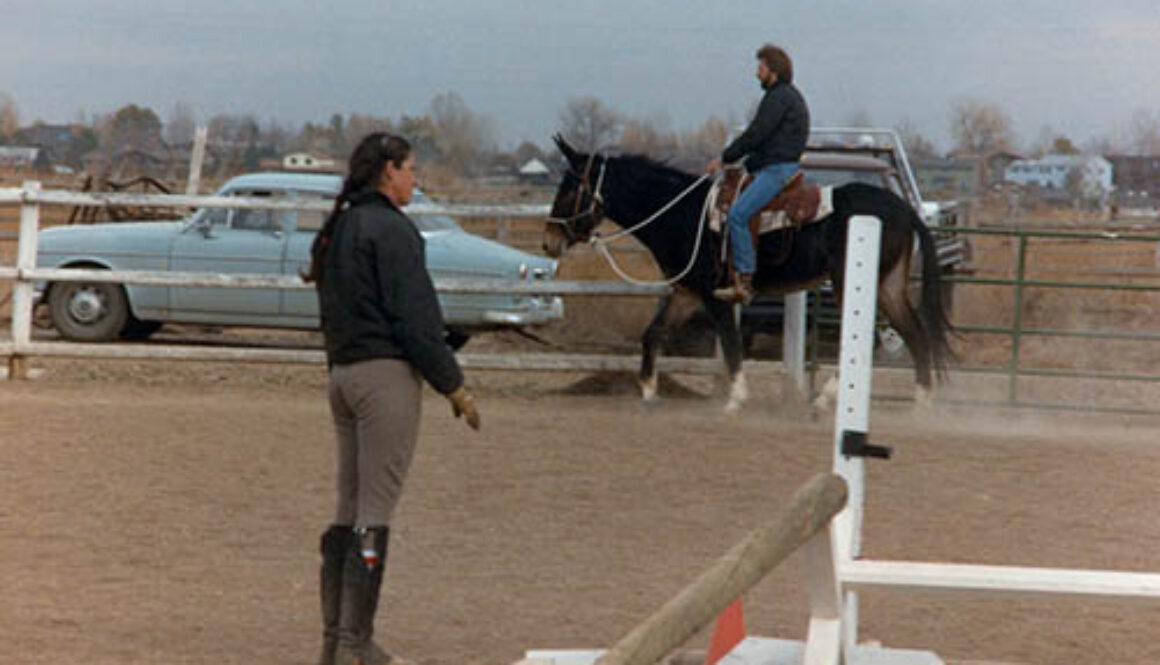
MULE CROSSING: Benefits of Professional Training
By Meredith Hodges

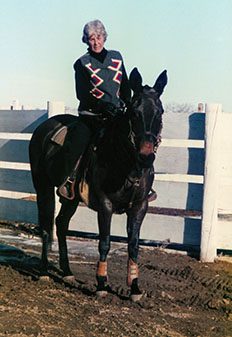

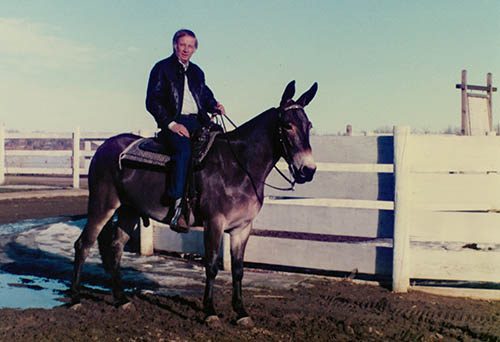

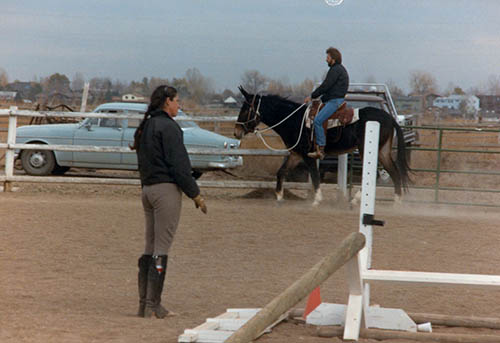
There are many mules that are calm and easy to handle. Each animal has his own particular set of idiosyncrasies that are unique to his situation. Some are more spoiled than others, but nevertheless generally cooperative. But what of those times of difficulty? What about taking only one lead, or tripping or falling? These are things a professional can help to correct. These are also things that should be corrected both for your sake and for the sake of your equine. His general health and your total enjoyment and safety are at stake!
Not unlike humans, mules must be taught how to carry themselves to make maximum use of their bodies. Overall muscle and skeletal conditioning is necessary for maximum performance that results in a sound body and a sound mind. The equine that has difficulty in picking his leads correctly is generally an animal that is not conditioned properly in good equine posture and balance. The muscles in his body are stronger on one side than they are on the other side which makes it painful and difficult for him to perform on his weak side. This only adds frustration to the whole situation when he cannot do what you ask. If you, as the owner, do not realize his physical limitations, it could jeopardize the whole relationship with your mule, thus limiting pleasure.

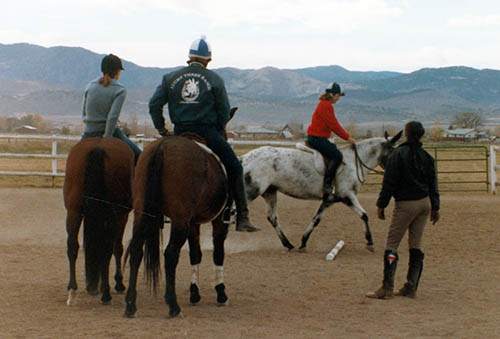

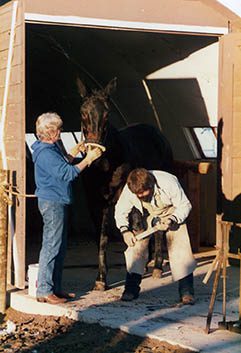
The benefits you will reap from professional training can be numerous. You will have a smoother ride because the animal is correctly balanced and strengthened in good equine posture. The animal will have more stamina, agility and endurance. He will have a higher resistance to disease due to increased circulation in good equine posture which greatly reduces vet bills and maintenance costs. There should be no worry about his behavior in public, but most of all, he will be an enormous pleasure to his owner and a credit to his breed.
To learn more about Meredith Hodges and her comprehensive all-breed equine training program, visit LuckyThreeRanch.com, MEREDITH HODGES PUBLIC FIGURE Facebook page, or call 1-800-816-7566. Check out her children’s website at JasperTheMule.com. Also, find Meredith on Pinterest, Instagram, MeWe, YouTube and Twitter.
Covered in TRAINING MULES & DONKEY: A LOGICAL APPROACH TO TRAINING, TRAINING WITHOUT RESISTANCE and EQUUS REVISITED at www.luckythreeranchstore.com.
© 1986, 2016, 2024 Lucky Three Ranch, Inc. All Rights Reserved.
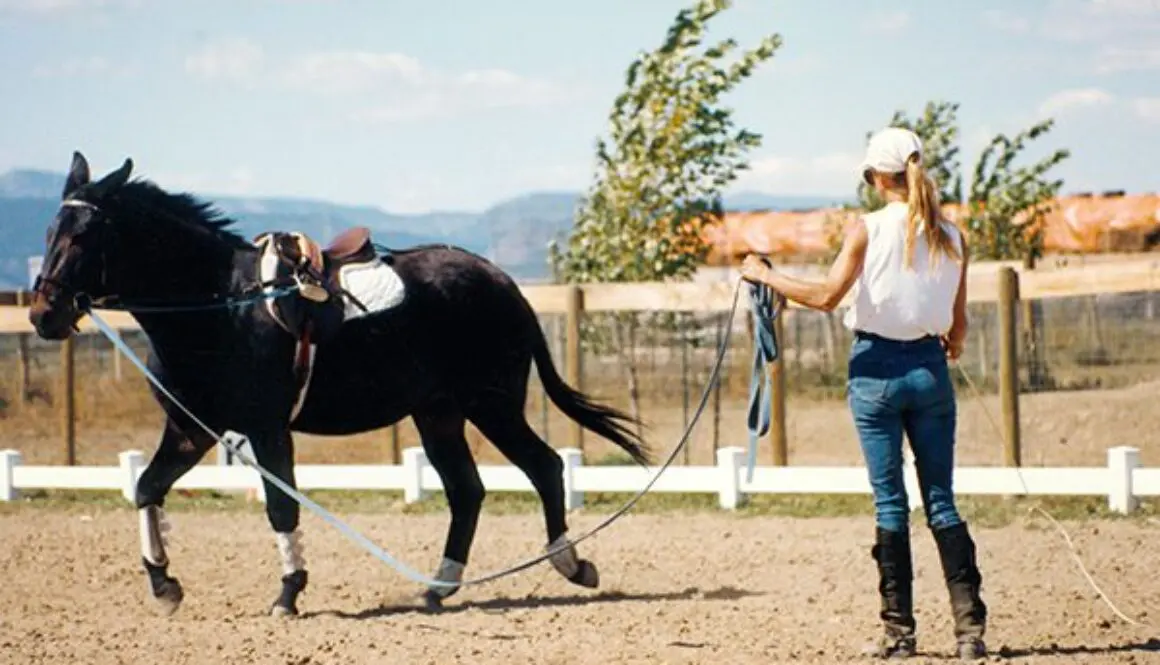
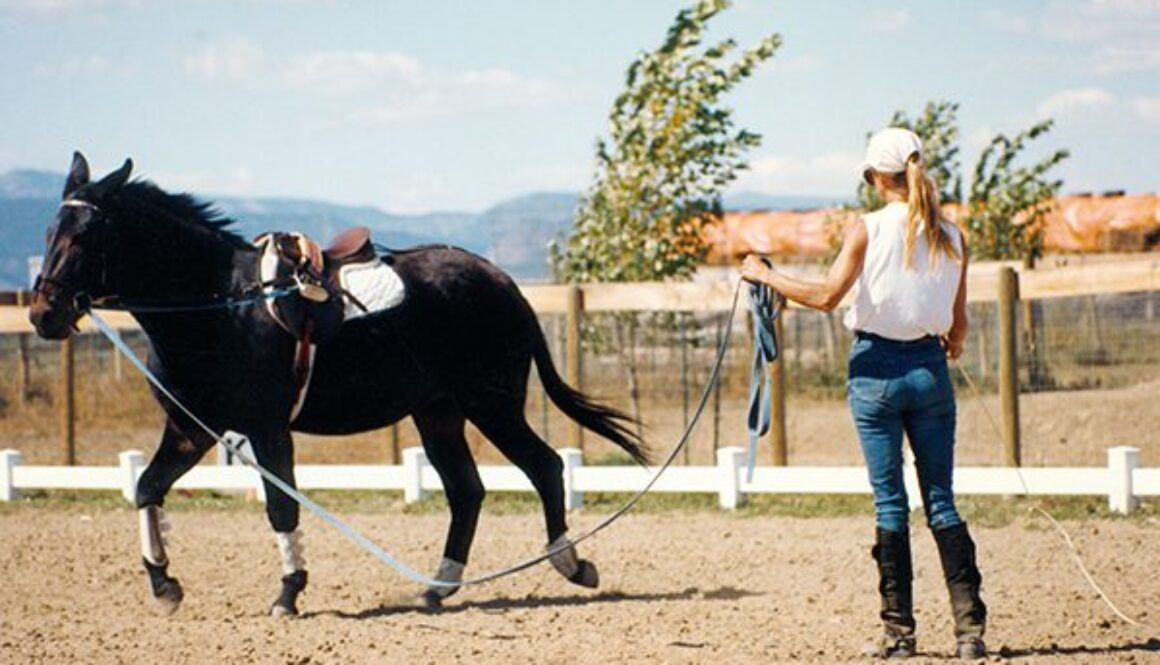
LTR Training Tip #54: Setting Up for Successful Lunging
Know when your equine is ready to start working on lunging, and how to best set them up for success.

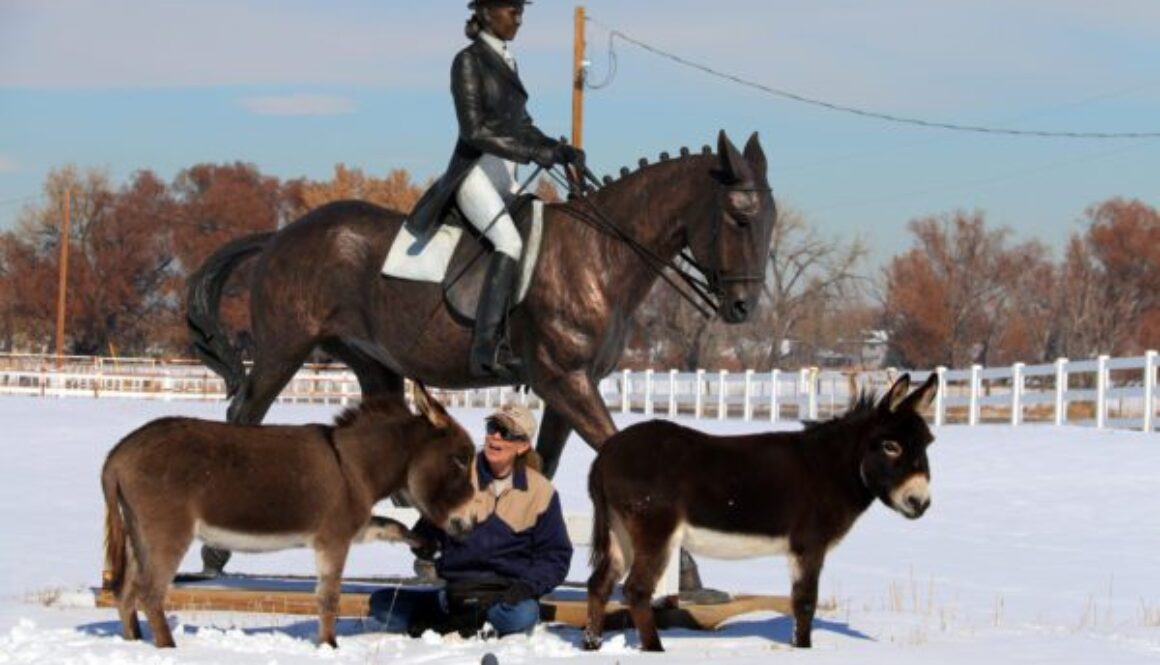
Another Augie and Spuds Adventure: SnowPlay 01-14-22


To learn more about Meredith Hodges and her comprehensive all-breed equine training program, visit LuckyThreeRanch.com or call 1-800-816-7566. Check out her children’s website at JasperTheMule.com. Also, find Meredith on Facebook, YouTube and Twitter.
© 2016, 2017 Lucky Three Ranch, Inc. All Rights Reserved.
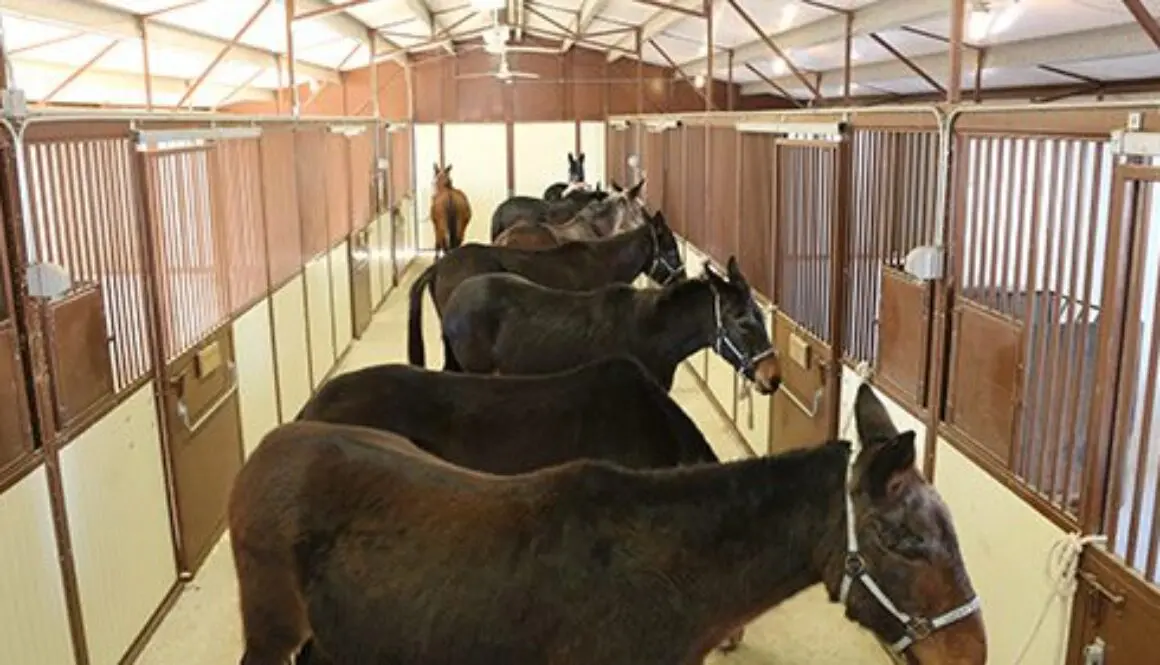
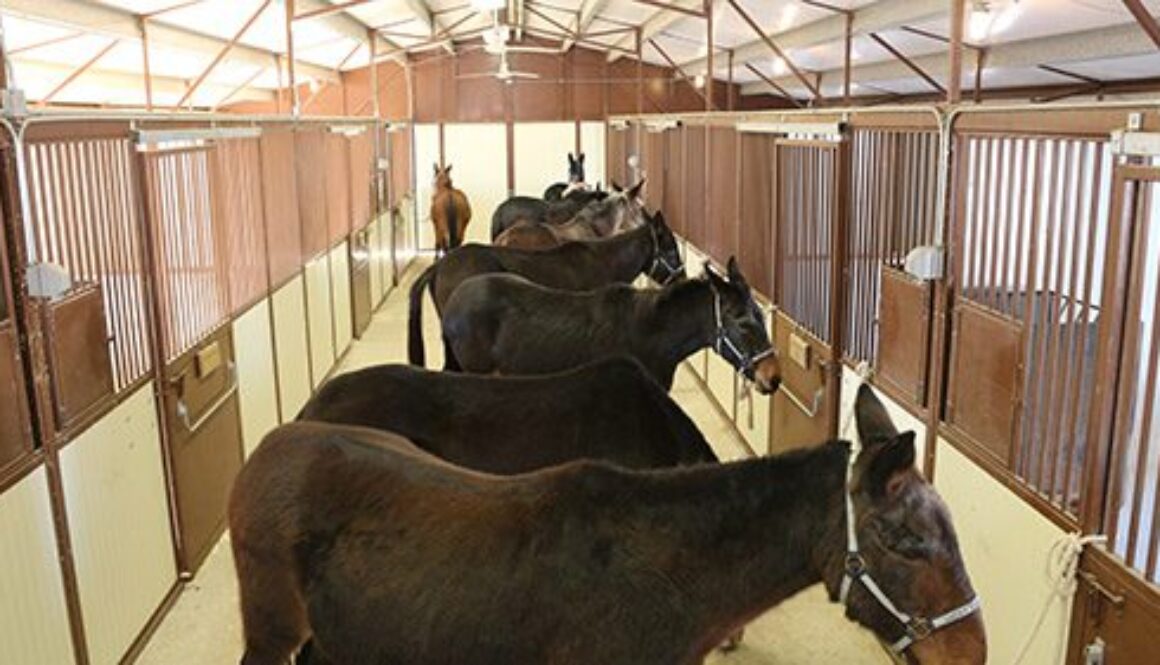
LTR MULES: Efficient Grooming Practices 12-1-21
On November 22nd, of 2021, I posted, on my MEREDITH HODGES PUBLIC FIGURE Facebook page, information about how to maintain your tack and equipment, and how to keep a neat and tidy tack room. There were a lot of comments about it and many people indicated that they thought it would be easy if you had the staff that I have.
Just for the record, when it comes to my equines and their tack and equipment, I do most of the work myself. My TWO guys do clean the stalls and runs daily, and the larger dirt pens weekly when the animals are overnighted there, and they do feed in the mornings, midday and evenings. TWO of my girls take care of the inside and external cleaning of the multiple buildings that we have, and they condition the tack and equipment as needed, but mostly every three months because we clean things as we use them.
My THIRD girl assists me in the office checking the website and Social Media connections, making Social Media posts (with the exception of Facebook that I do myself), editing articles, advertising and the newsletter, fulfilling orders and MUCH more. TWO of the girls and I film and take photos of EVERYTHING we do so we have material for our posts, articles, video Training Tips and Documentaries. We put these together with our TWO remote videographers and we have ONE remote graphics artist that also assists with publications. Our JASPER MASCOT also doubles as a website tech person. So, we have a VERY SMALL staff to cover all the work that we do. We are prompt in doing what we do because we want to provide all of you the information that you need to have the same success with your equines that we have with ours. In this post, I will address how I efficiently keep all 17 of my equines clean and healthy.
I find that when you have a regular weekly grooming routine along with good environment cleaning practices, the animals do not seem to get as dirty as they would otherwise. Spring is obviously the most intensive time of the year because of mud and shedding, but during other times of the year, grooming can go quickly. During the summer months, they have short hair coats and will only need to have bridle paths trimmed, faces, ears and nostril cleaned, Johnson’s Baby oil in the manes and tails, Neosporin for any cuts and scratches, and a quick go-over with the Dandy brush. Since I keep them barefoot with regular trims every 6-8 weeks, they rarely need their feet cleaned. I carry the grooming tools in a bucket and visit them wherever they happen to be, either in their stalls or in turnout. Because they are all taught the same manners, they come to me and line up for their turn wherever they are.
We have had good weather this fall, but with the lack of moisture, they are all pretty dusty. Since we are using my Tack Barn as an art studio and getting the BELLE, JASPER, MOXIE & KYLIE bronzes ready to be cast for their placement in our newest project, the OLDE WESTERN TOWN OF ASSPEN here at the ranch, I opted to vacuum everyone in the alleyway of the barn.
The first thing I did was to have them exit their stalls and be tied in the alleyway. I brought in Augie, Spuds and Billy from their barn and added them to the eight mules from the South Barn. As I retrieve them, I ALWAYS open the door, ask them to come to me, reward them and then put on their halter. They learn to stand quietly and will not exit the stall until I give them permission to do so.
So I can be hands-free with the halter, I will often allow them to eat their reward directly from the fanny pack of crimped oats that I ALWAYS wear around my waist. If they get pushy, I will say, “NO!” and put my hand up like a stop sign and ask them to back off. If that doesn’t work, a quick slap to the side of their mouth after they have been asked does work. Consistency in MY behavior is key!
They have all been introduced to the vacuum cleaner and stand quietly while I go from one to the next. If they start picking at each other, I just holler the name of the perpetrator and say “NO!” VERY LOUDLY! They always stop because they know the next thing is a pop on the rump from me!
I am always aware of each animal, but I do not “move over” for them. I ask them to “move over” for ME. Then they are rewarded with crimped oats. Once they learn, for instance, that I need to return the vacuum to its spot, and that they will all get rewarded for standing quietly, they give me my space as I work around them, even during rolling up the extension cords!
Since I have so many animals, I do have to refill the fanny pack often, so I keep a full bucket available in a convenient spot for refills. Once they are all vacuumed, I ten move down the line and wipe everyone’s faces. They get their eyes, ears and noses cleaned thoroughly. They quickly learn to accept the process and then I reward them once they are all done. When I do them individually before riding, I will reward each immediately after each task. When they are all together, they will behave better when they have to wait to be rewarded when they are ALL done with each task. Then I go down the line and sprinkle Johnson’s baby oil in all their manes and tails and reward their good behavior when that is all done.
My 28 year old mule, Merlin, poked his eye on a tree branch when he was a yearling. I opted not to have his eye removed, so we have been treating it for 27 years. We keep him in a fly mask all the time to keep the dirt and debris from irritating it. Twice a day face wiping keeps it sanitary and it is easy enough to do at feeding time. We just carry a wet rag with us when we see him.
When they are all done, I lead them back to their stall, send them in while I stay at the door and ask them to turn back to me for their reward. As they chew their reward, I remove the halter and bid them a fond farewell!
With the 11 mules and mini donkeys finished in the South Barn, I next go to the North Barn to repeat the process with the remaining six animals, two Large Standard Donkeys (Wrangler & Chasity), a miniature mule (Francis), a miniature horse (Mirage) and two saddle mules (Jubilee & Brandy).
Again, I ask them to come to ME, give them their reward and then halter them as the chew. They are all happy to stand still until I tell them they can walk out the door.
I repeat the whole process with the vacuum cleaner and again, they have all been trained to accept it, so they stand quietly and happily. I do believe that they really DO enjoy being cleaned…even if they do go back and roll almost immediately…LOL!
Then comes the face-wiping followed by the Johnson’s Baby oil in the manes and tails. I do not cut their bridle paths in the winter. It gets very cold here and I don’t want them to lose heat from their bodies.
Then it is time for them to be returned to their stalls. I have two rescues (re-trains) in this group and they watch intently as the old troopers enter their stalls and behave impeccably!
When Chasity was returned to her stall, I asked her to walk through the narrow space between my truck and the wall of the barn. My assistant was filming from the bed of the truck and as I said earlier, we do not move over for them! Chasity walked quietly through the narrow space, did not rush or push me, but followed obediently. She was sent into her stall, turned around and got her reward. Then, it was Wrangler’s turn.
Francis is a mini mule that I got 10 years ago and to this day, she is still suspicious of humans, but is learning to trust. She can be fully groomed in her stall with no halter, but she can become quite a handful when outside the stall. Her natural reaction is to bolt and run any time she get the chance. When I return her to her stall, I set her up for success by looping the end of her lead rope around the stall bar so if she does bolt, she won’t be able to pull the lead rope from my hand and will be forced to turn around and face me. She didn’t even try to bolt this time, kept the rope loose and returned to me for her reward. Then I went and got Mirage, our 26-year-old miniature horse, and returned him to his stall. The grooming of all 17 animals only took me 2 hours! Organized practices and teaching good manners makes all the difference!

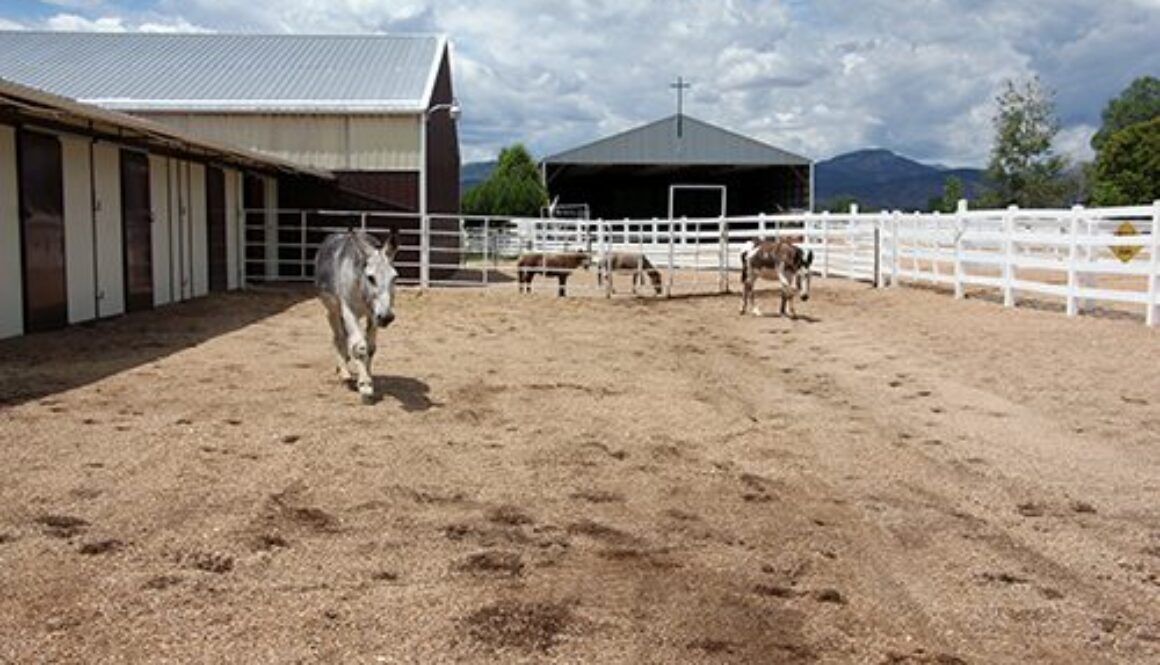
CHASITY’S CHALLENGES: Maintaining a Happy Donkey: 3-2-20
When Chasity first arrived, we needed to keep her in quarantine, away from the other animals for a minimum of two weeks. Over the past 41 years, we altered our facility to an all-steel facility. Reduced maintenance costs enabled us to proceed converting from wood and wire to steel until we completed the process. This has greatly reduced the overall maintenance costs for the entire ranch, enabling us to purchase steel panels for the barn runs. It was easy to quarantine Chasity safely and still allow her company (at a distance, of course!) and an introduction to her future stable mate, Wrangler. About every five years, we do have to spray paint the panels to keep them looking new, but this is a small price to pay for a happy donkey!
Once out of quarantine, Chasity and Wrangler were stabled next to each other. All of our runs are bedded with four inches of pea gravel. This promotes good drainage and keeps things from getting muddy. This, in turn, provides a hard surface for good hoof health and will not chip their feet because of its rounded shape. Each of our donkeys is given a soccer ball for play in the smaller areas. The ground surface is also soft and comfortable enough for them to lie down without causing shoe boils or sores. They learn to come by calling them to the end of the runs and rewarding with oats.
The mini donkeys’ pens are the same way, as is the road around the sandy dressage arena where they can also be turned out in the larger dirt area when it is not in use. They really enjoy a good roll in the sand.
Donkeys are desert animals and can easily become obese when exposed to green pastures. I only take my donkeys out to pasture to play with me.
My 60’ x 180’ indoor arena is lined with steel panels. I have a 45’ Round Pen at one end with obstacles inside the side gates around the south end. The enclosed area makes for good obstacle training with minimal distractions. Round Pen work and turnout in the open area during bad weather is completely safe and NON-DESTRUCTIVE!
At first, Chasity would not come to me at the stall door, but after being chased once into the stall to be haltered, she soon gave in easily. I always halter in exactly the same way, in the same place. They love routine.
The oats reward assures that she will repeat the behavior. After only one lesson, she now comes to me every time to be haltered. For clean, dry stalls, we bore a 2’ wide x 4’ deep hole in the center, fill it with 1 ½” rock, cover it with four inches of pea gravel and put rubber mats on top. The pea gravel is held in with 2” x 6” boards bordered by angle iron.
Since we had no animals in the north stalls, we took down the panels and made a large turnout area bedded in four inches of pea gravel for Wrangler and Chasity. It was plenty large enough to romp and play…and not get muddy!
When I am out and about the barn, I reinforce Wrangler and Chasity’s will, as well as all the others, to come to me for their oats reward. We keep bulk rock, pea gravel and structural fill in bays behind the indoor arena.
When the equines are in turnout, we replenish the pea gravel as needed with the Skidsteer.
Wrangler and Chasity, our miniature donkeys Augie & Spuds, miniature mule Francis and miniature horse Mirage also have alternate access to a very large 2 ½ acre dirt pen…Large Standard donkeys one day, miniatures the next.
When it is dry, they can take turns on alternate days in the larger area to stretch their legs and buck to their hearts desire. They do not seem to miss being in the pasture with this kind of management and they really do stay very healthy. We have no incidence of colic, founder, abscesses, skin irritations, rashes or obesity.
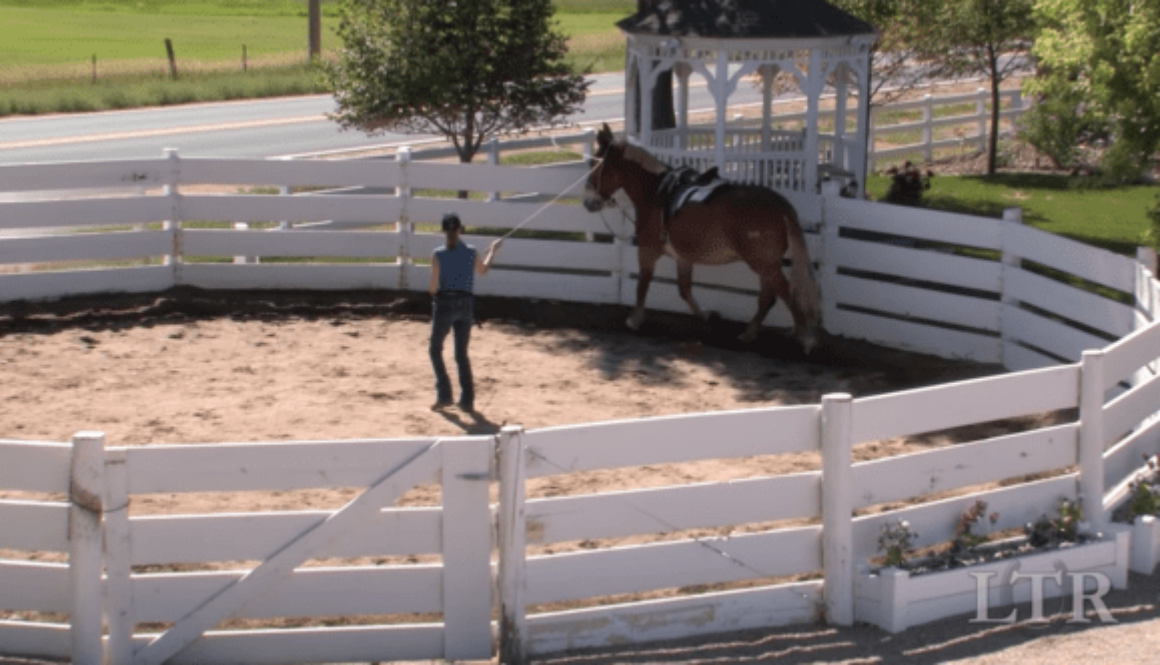
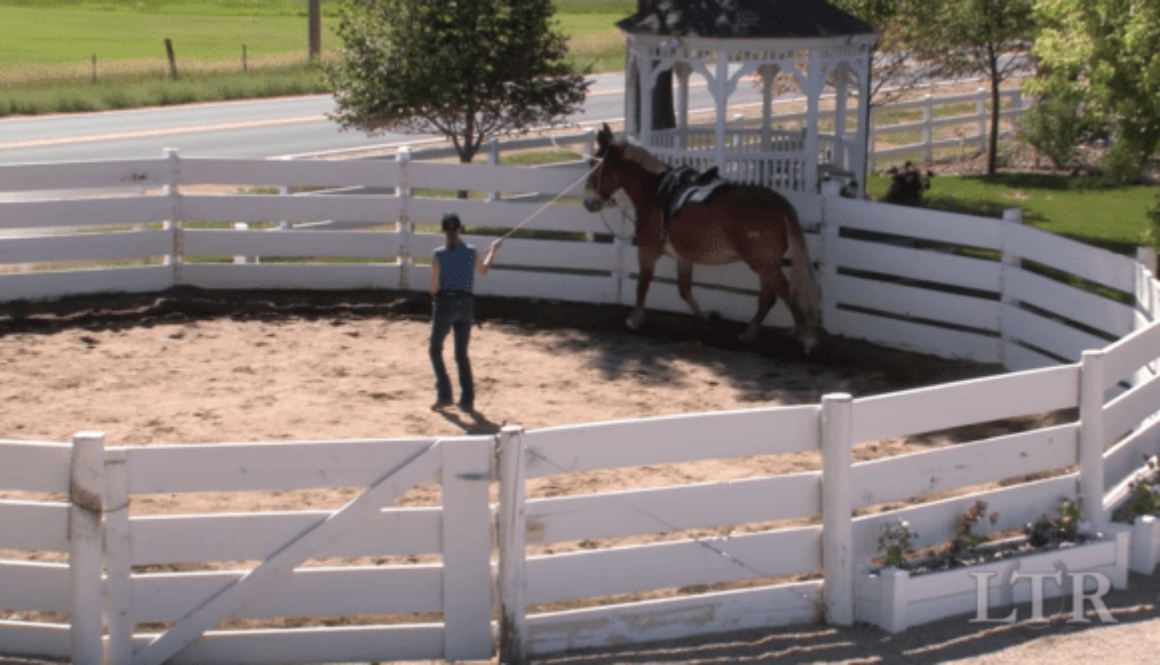
LTR Training Tip #53: Use of the Whip During Lunging
The whip is used in lunging to create movement and encourage impulsion in the equine and should never be used in an abusive manner. Learn how to use it the RIGHT way in Meredith’s latest training tip!


